Dosmoche – Masks, Threads and Fire
18. + 19. February 2023
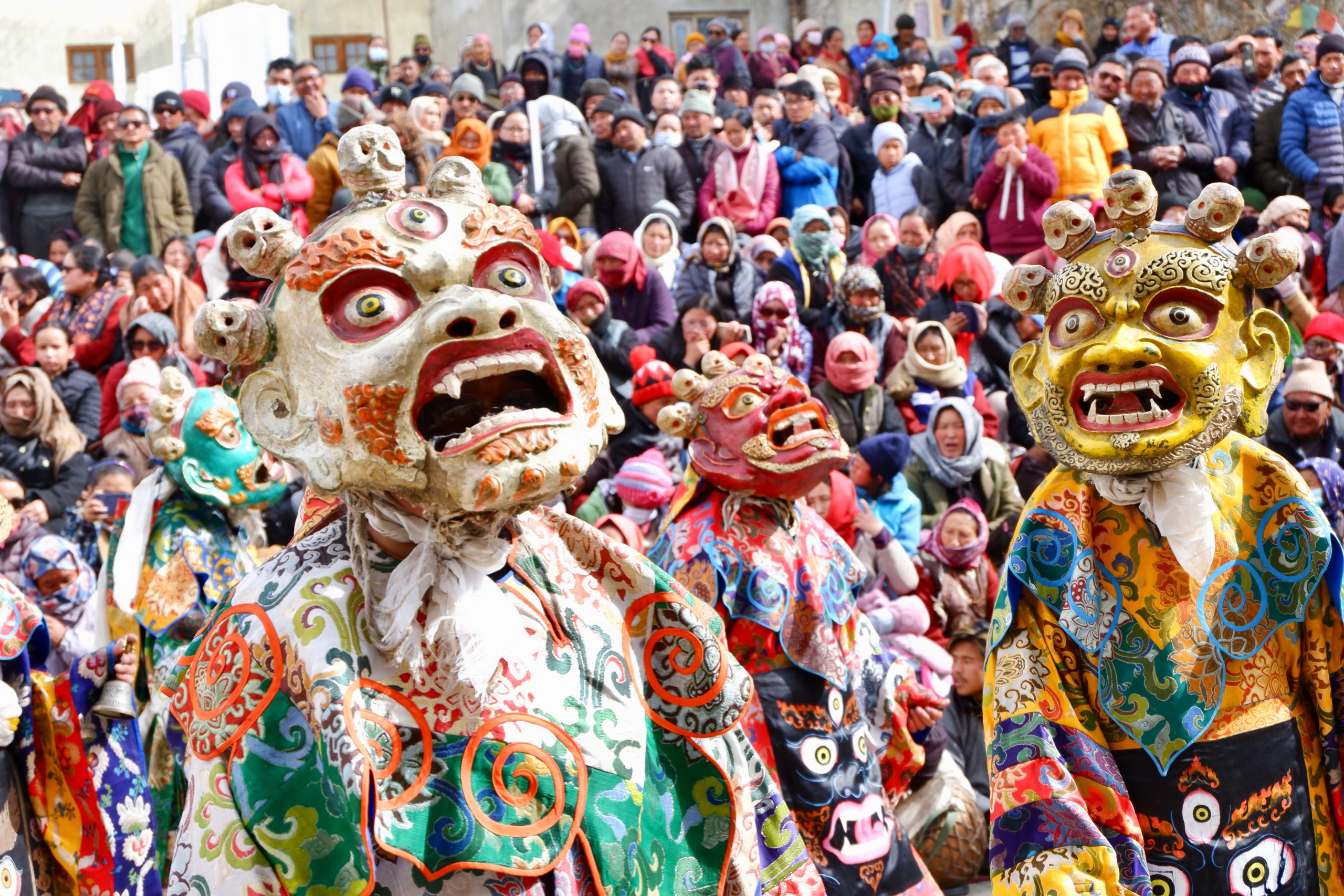
Dosmoche is not a place but a monastery festival in Ladakh. It takes place in Likir, Deskit and Leh. Leh does not have a monastery with monks, so monks from other monasteries do it clockwise – this year the monks from Hanle. I had been to Dosmoche in Likir several years ago and was curious to see what it would be like in Leh.
Like most other monastery festivals, Dosmoche takes place at the time of the winter solstice. The monastic festivals, also called chammysteries, evolved from the pre-Buddhist Bon religion in the Himalayan region. The dark forces of the harsh winter were driven away and the fresh, bright, new, fertile year was welcomed with demon exorcism and animal sacrifices. The Buddhist triumphal march, especially under the 8th century Tantric Padmasambhava, continued and transformed the ceremonies. In various monasteries, different aspects are emphasised, e.g. the triumph of Buddhism over the old religions, the teaching about impermanence and the preparation for the bardo (the time between death and rebirth). Dosmoche takes place just before the Tibetan New Year.
However, Dosmoche is still about banishing the dark powers of the old year. These are incorporated into dosmos, thread formations, under prayer rituals and destroyed during the festival. This is on the second day – now for the first.
The Chowkhang Vihara was quite crowded and, as always, the black hat dancers opened the ceremony with a purification of the courtyard.
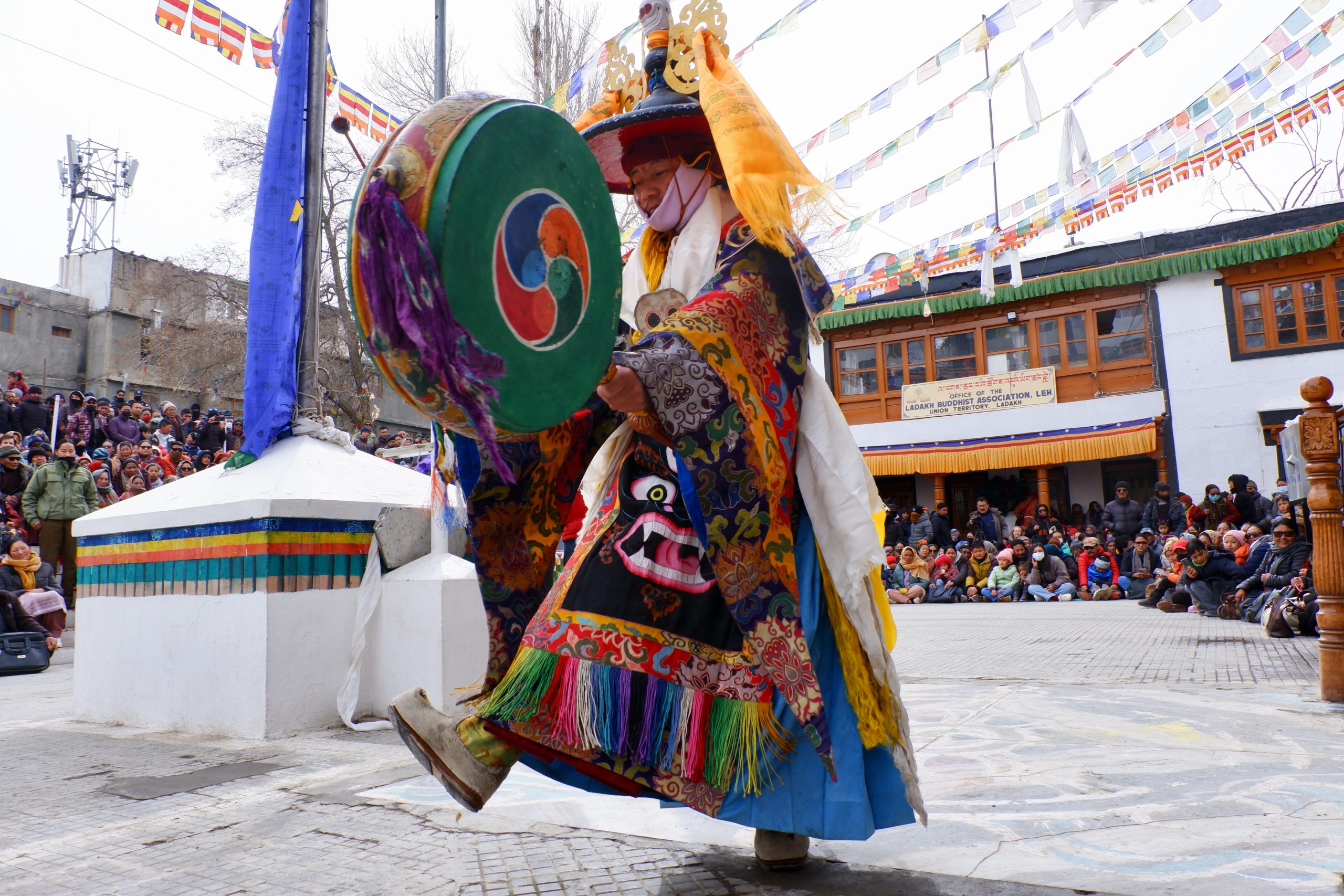 Opening
Opening
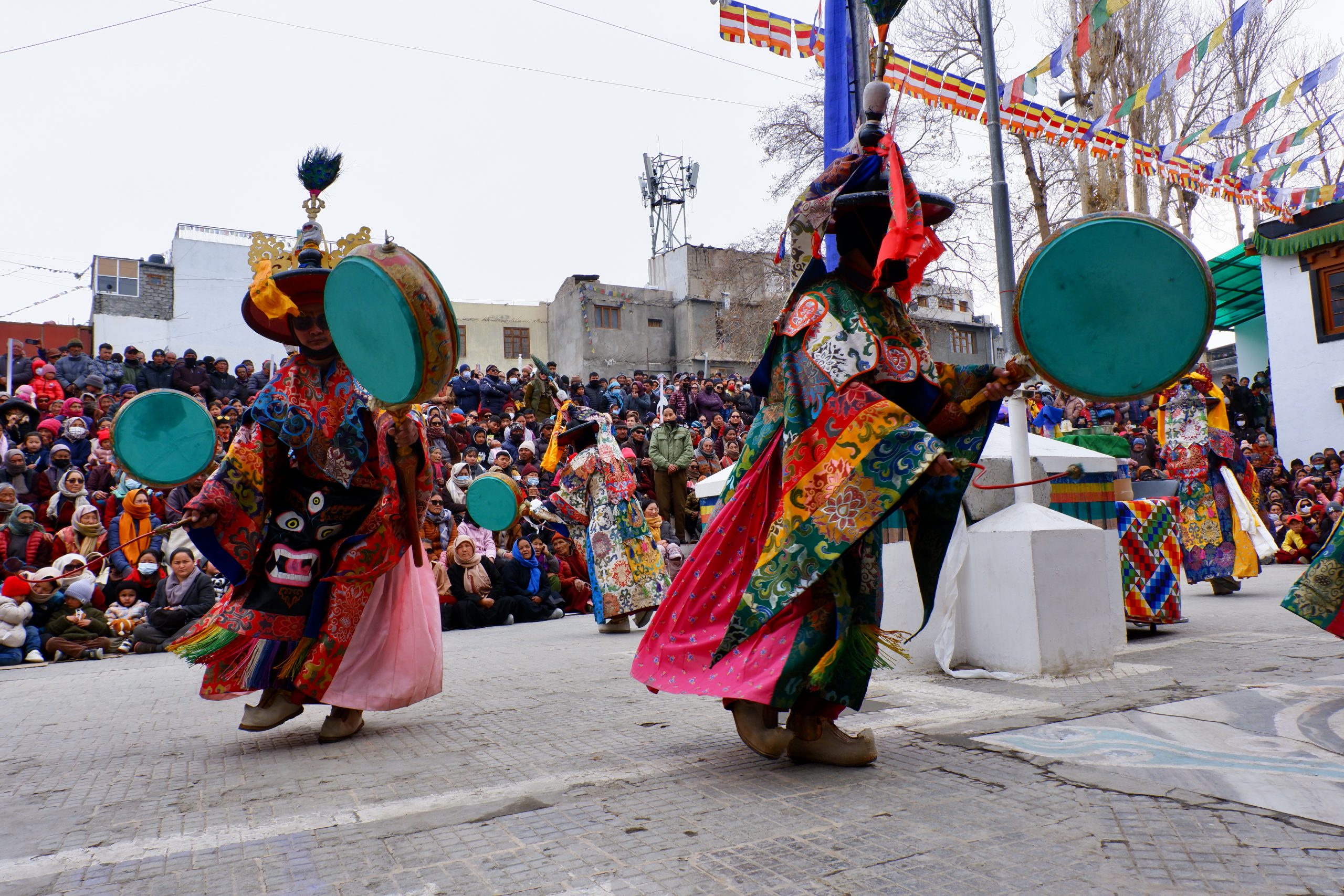 black hat dancers
black hat dancers
After that, more and more dancers with different masks came down the stairs and danced and performed rituals. I have to admit: I don’t really bother with all these details and meanings, etc. I like to be there in winter because there are at most 10% tourists among the spectators (this year I felt even less – all in all I have seen less than 20 western faces and not that many Indians) and it is just nice to experience a tradition together.
Even though I already have masses of masked dance photos, I feel the urge to add one or two more to these. So here are some:
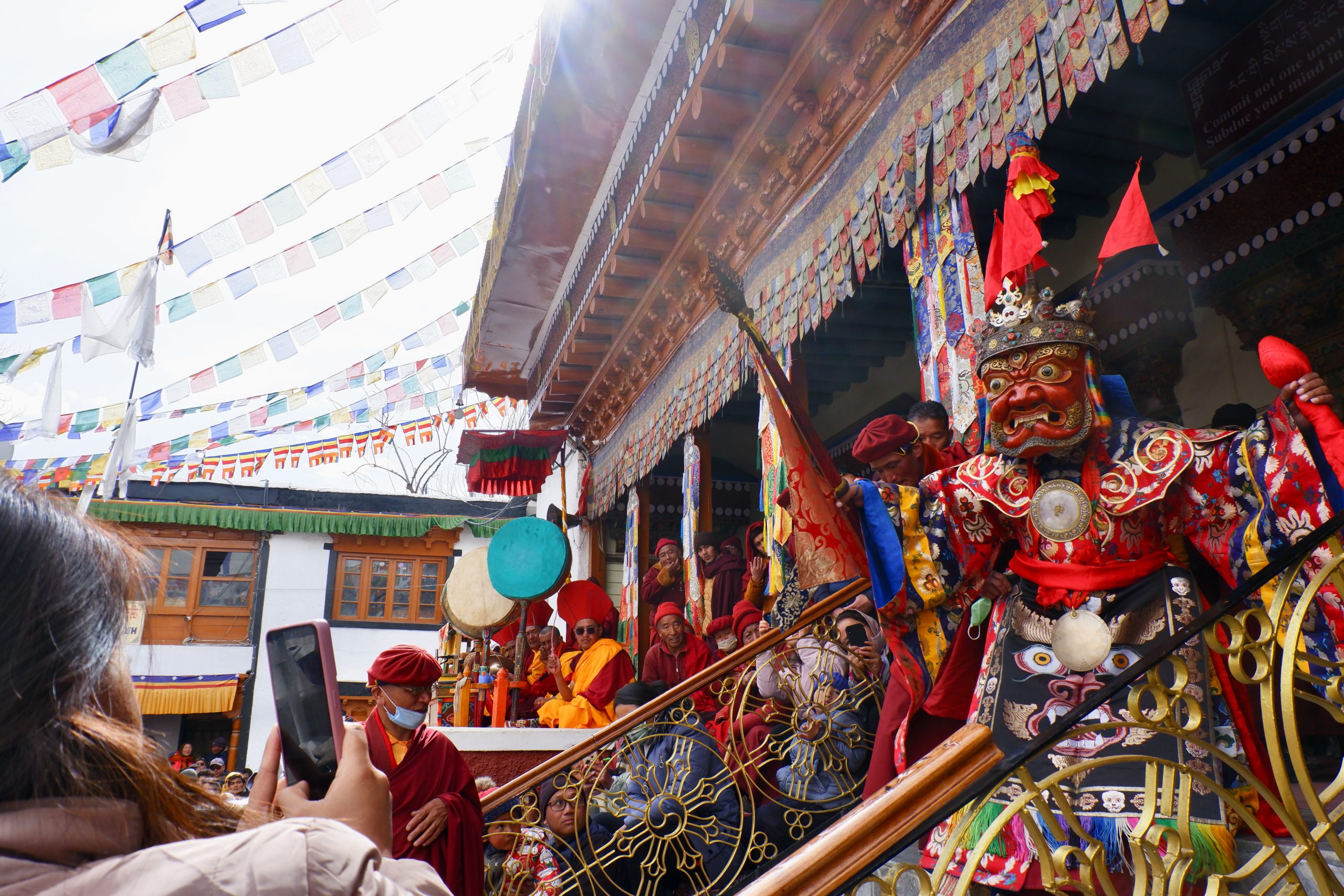 stairs
stairs
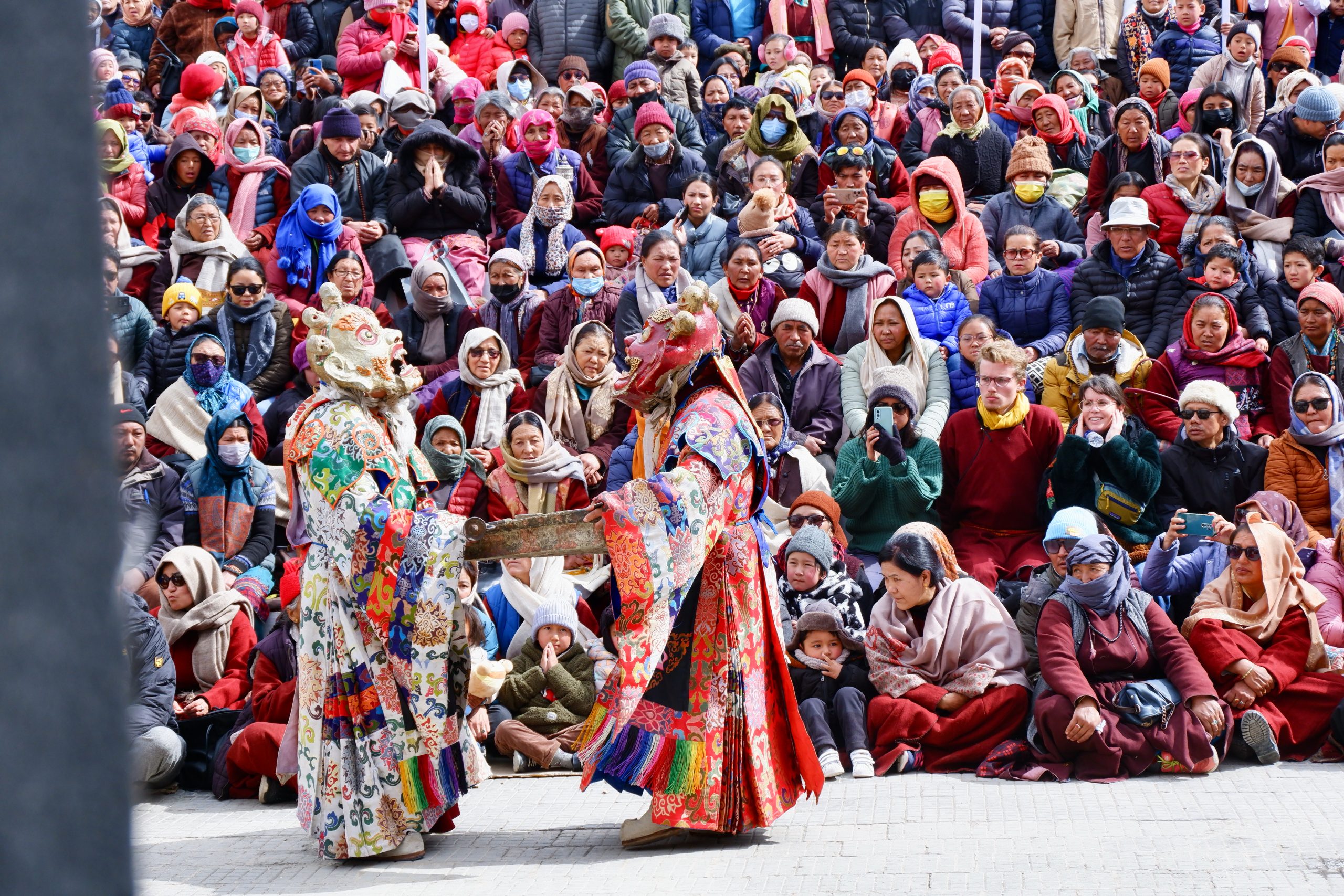 dance 1
dance 1
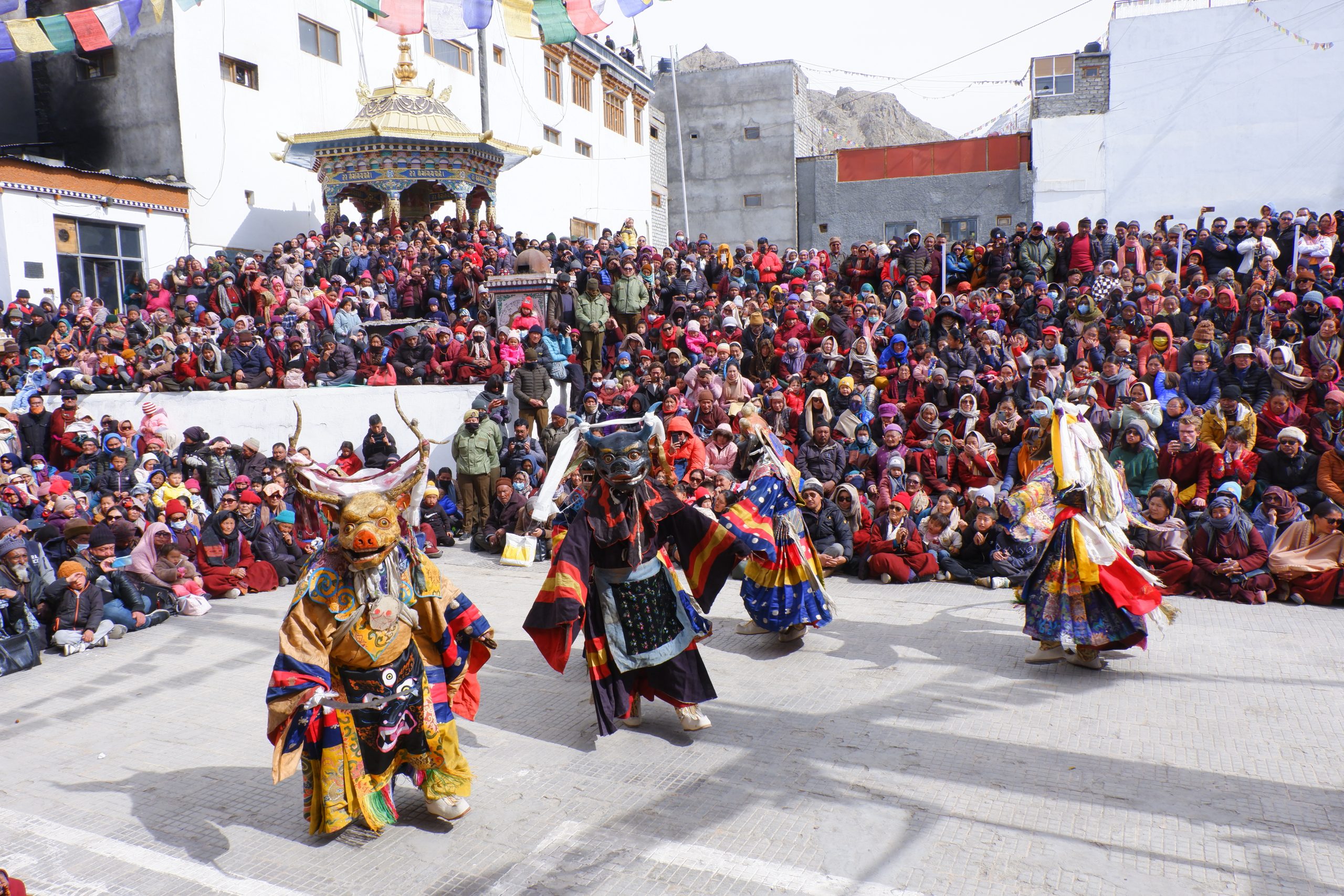 dance 2
dance 2
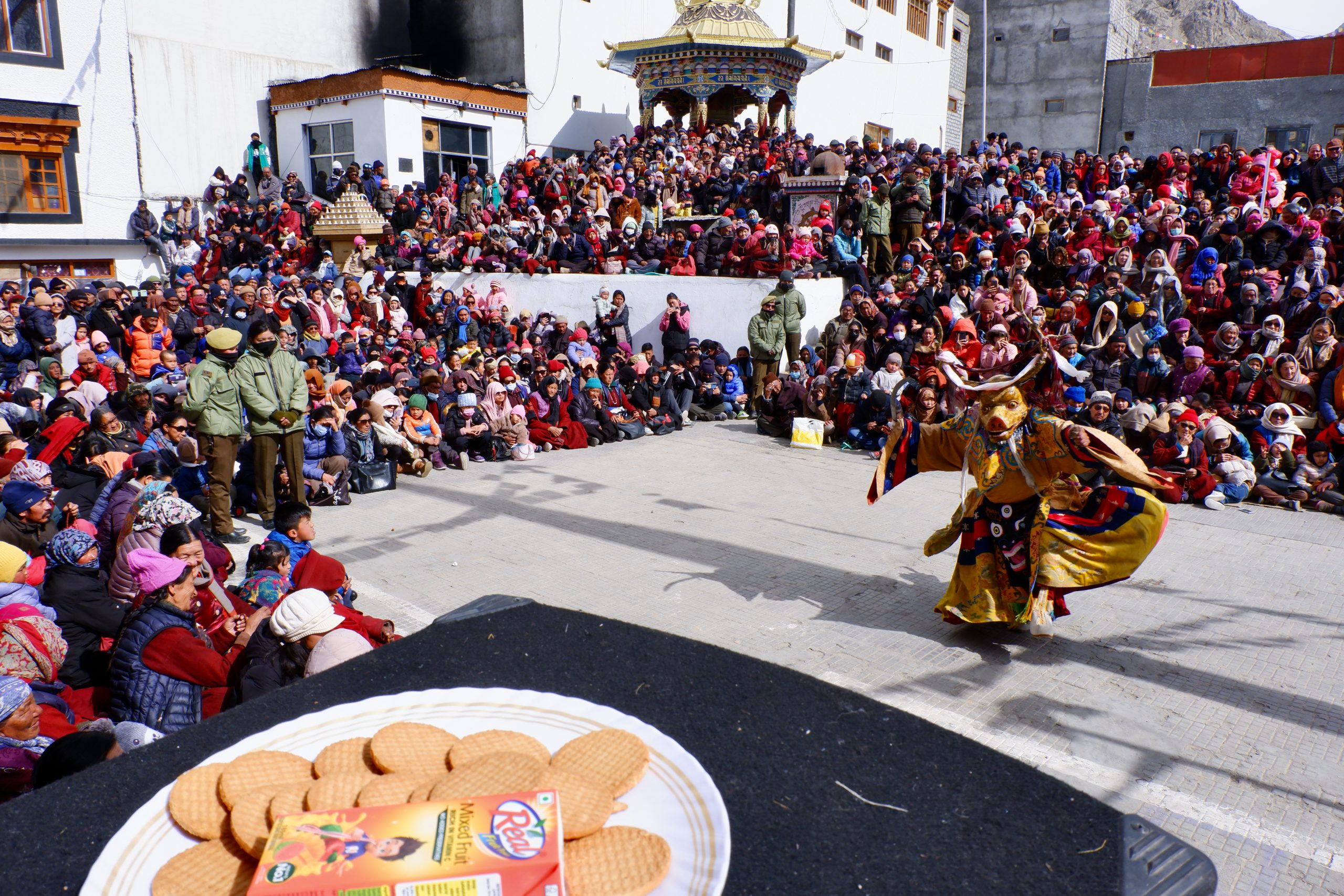 dance 3
dance 3
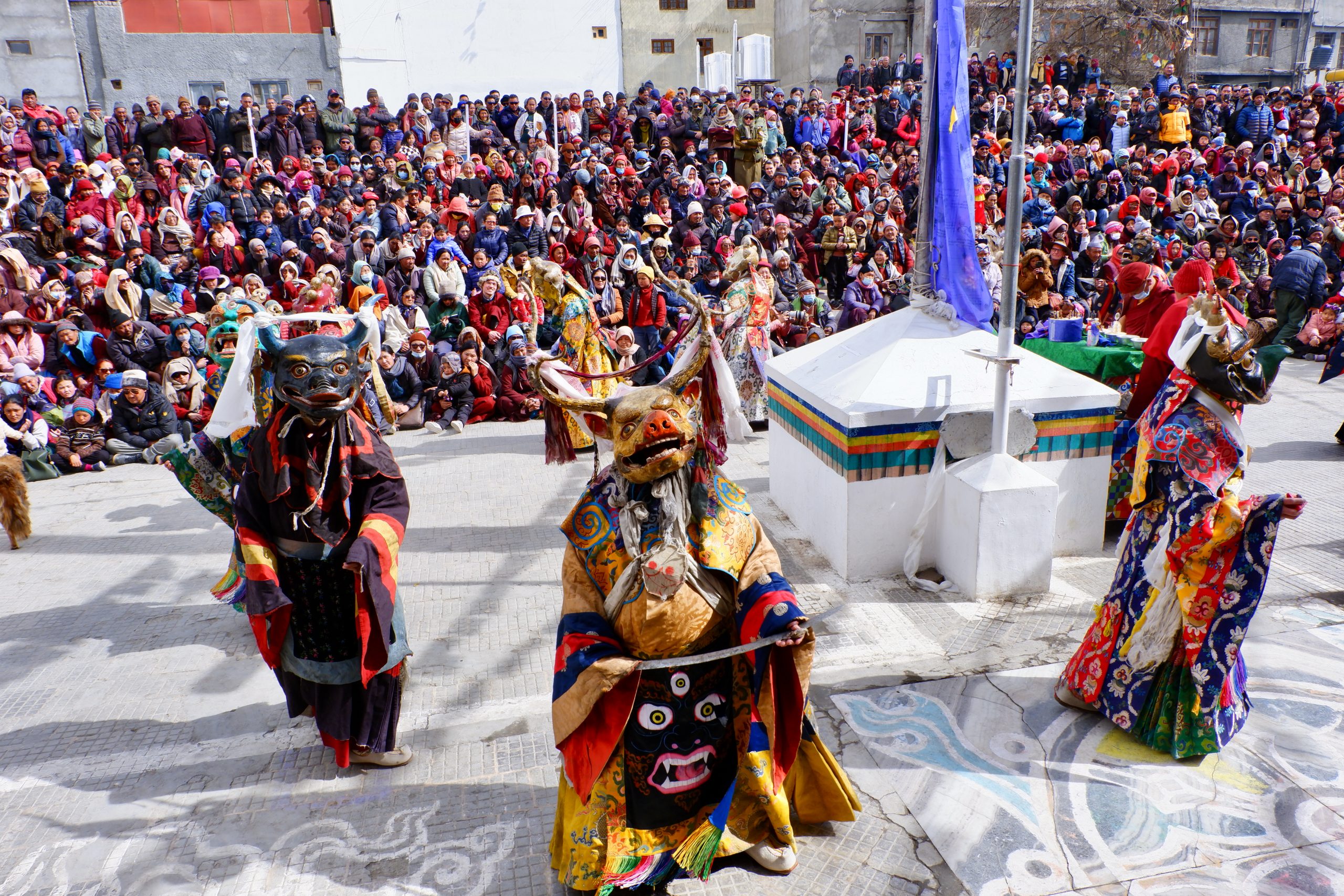 dance 4
dance 4
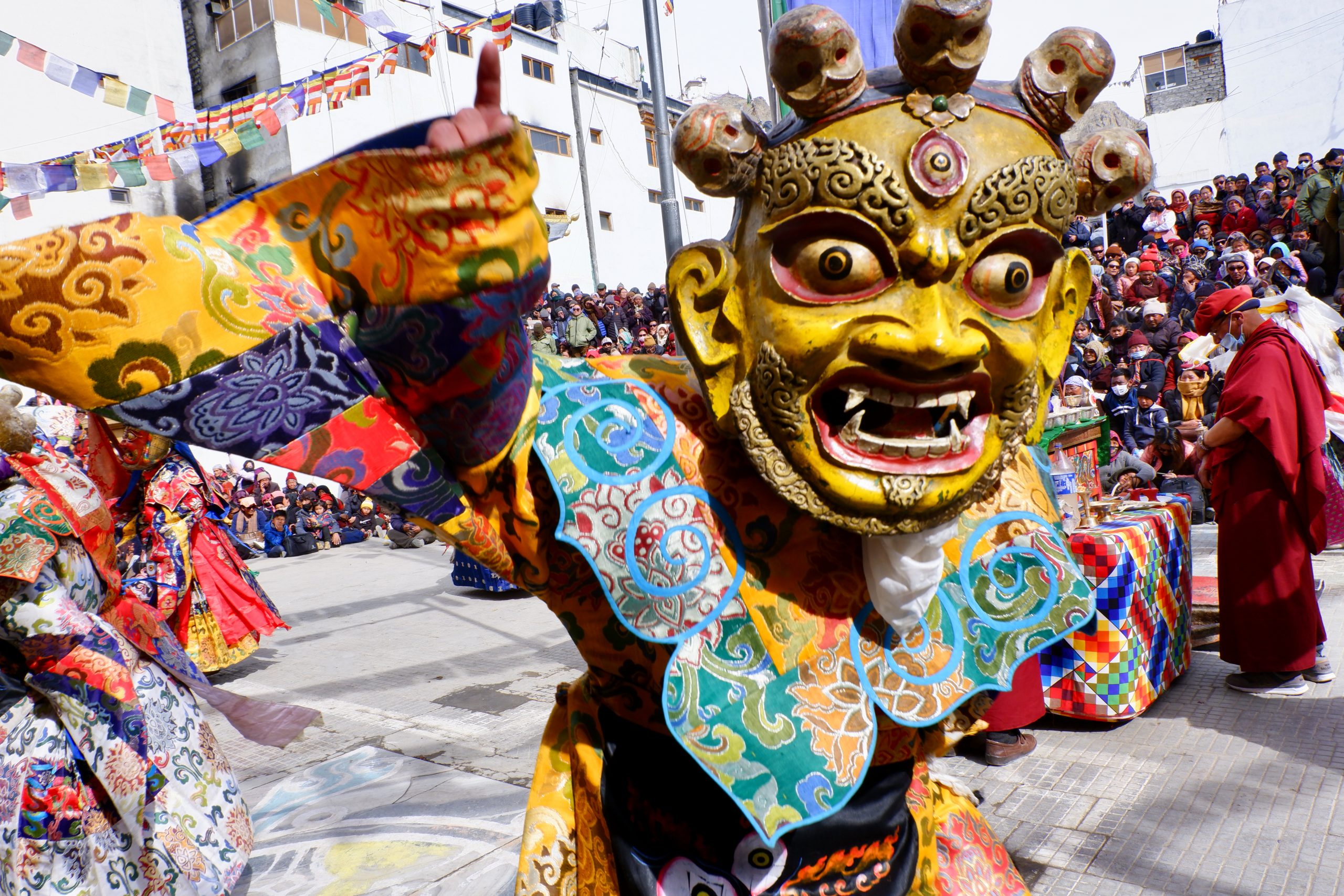 dance 5
dance 5
There were more dances to come, but hunger had left the stomach hanging between the knees in the meantime and besides, there were also 2 young ladies to meet – but more about that in a much later post. 😃.
I found day 2 more exciting, because things happened there that I didn’t know yet. People gathered again in the Chowkhang Vihara. Appu and Appu performed there first. For the Ladakhi New Year, there are many rituals with Appu and Appi, i.e. the two old people, male and female. They symbolise the old year and walk out of the village at the end. Here, monks performed it, so maybe there are two male Appus (although only men take on both roles during the New Year). The music is not played by the monks but by local musicians. Appu and Appu danced (sometimes very funny) and performed rituals.
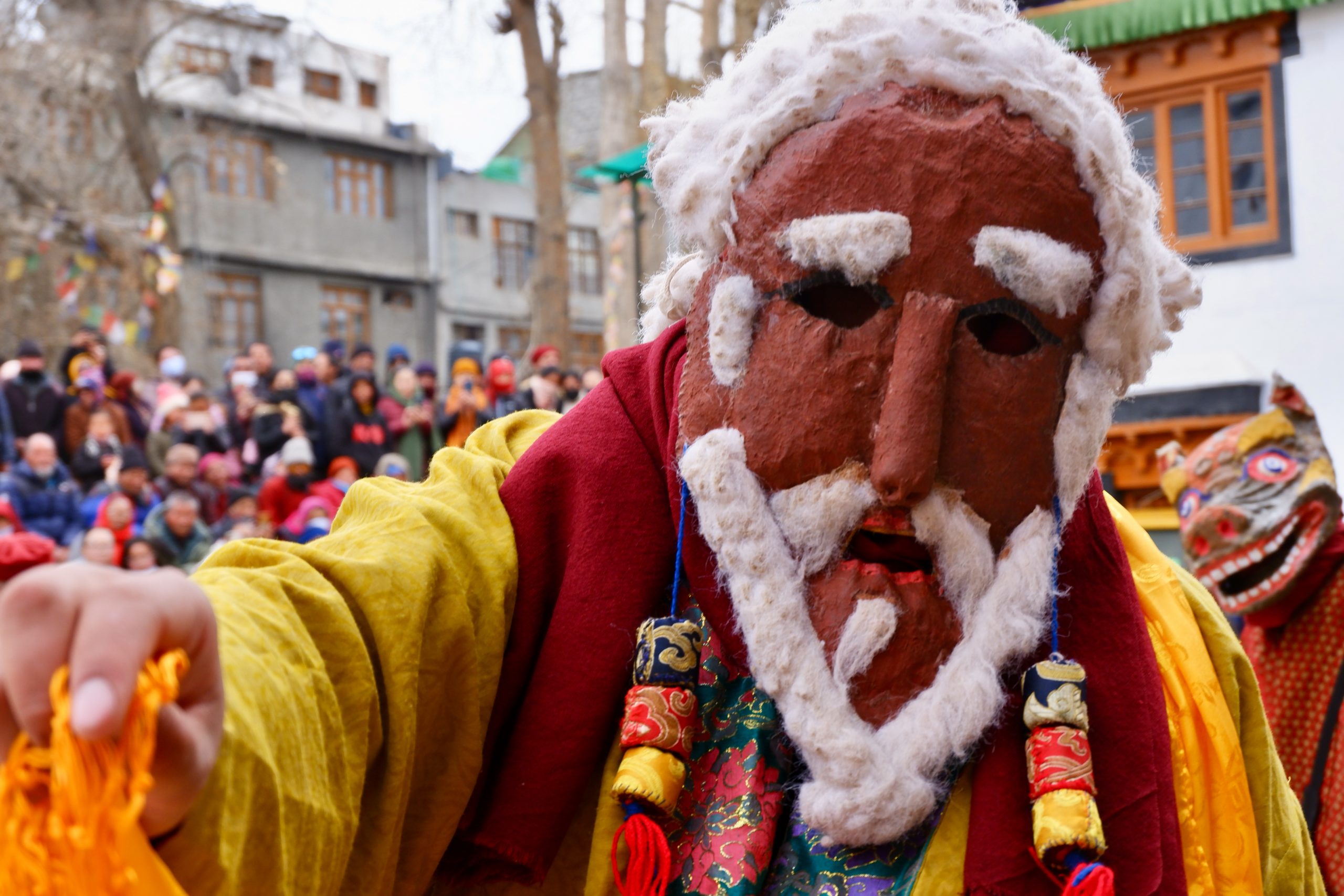 Appu
Appu
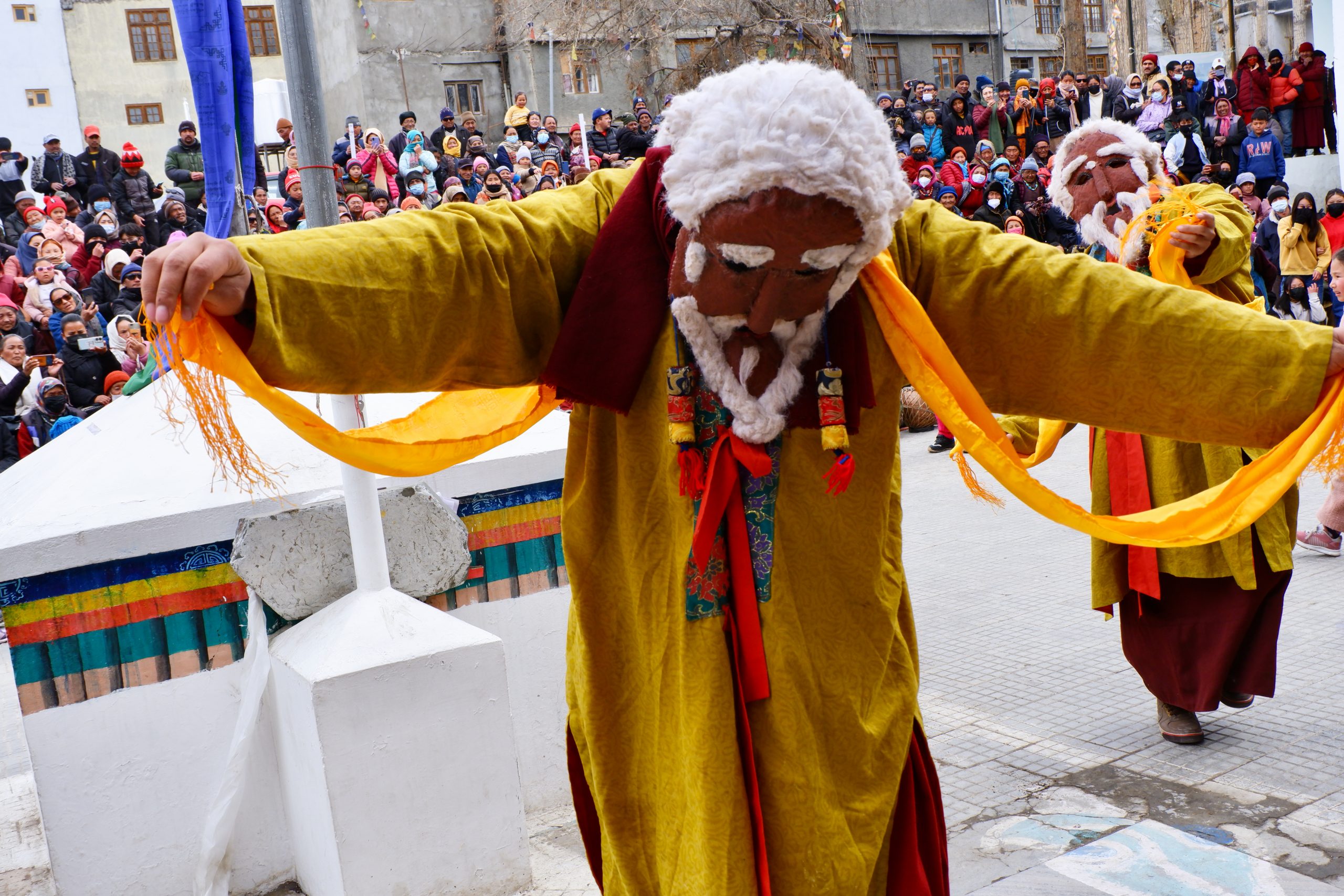 dancing Appu and Appu
dancing Appu and Appu
 Appu and Appu doing a ceremony
Appu and Appu doing a ceremony
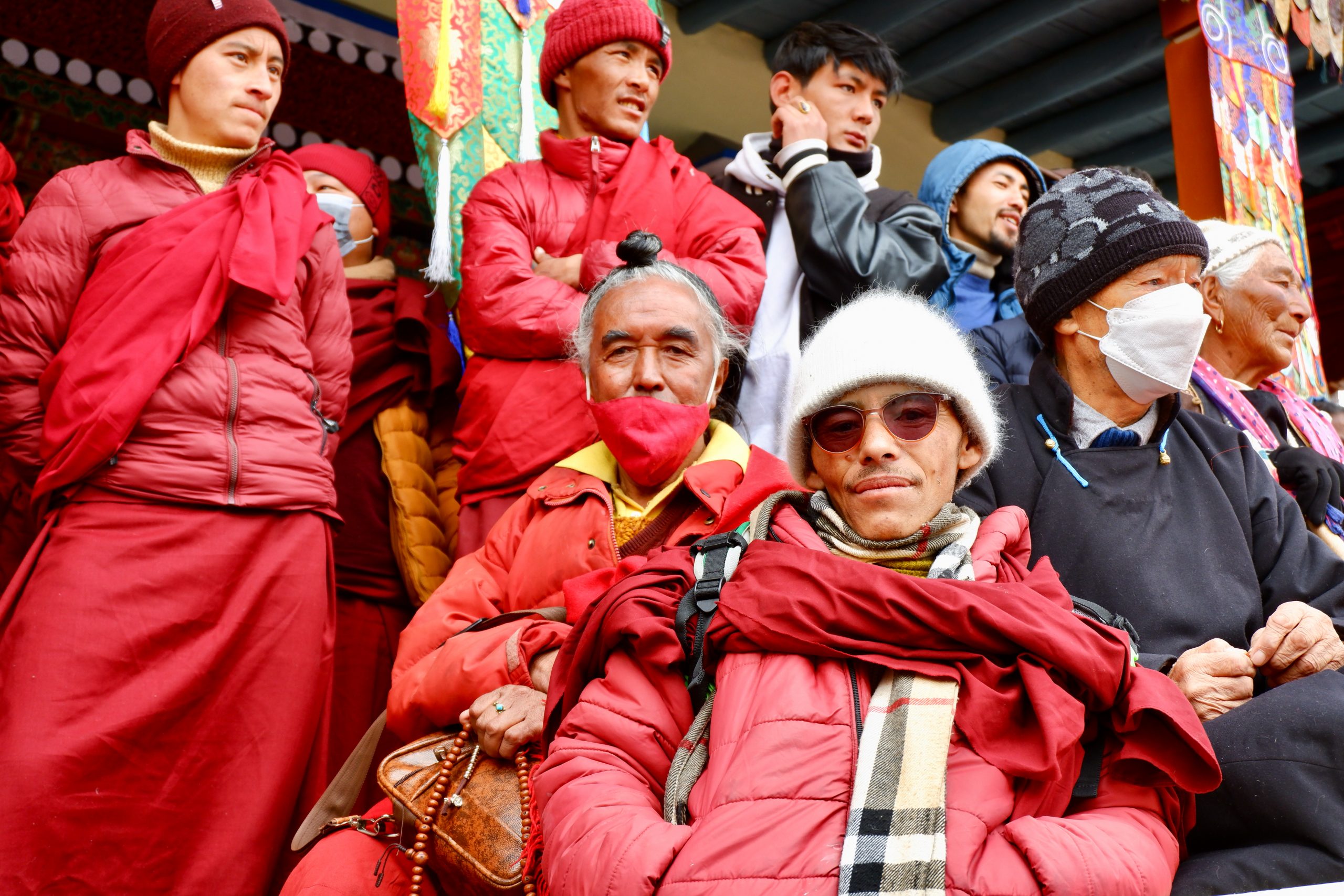 spectators
spectators
Then it was time for the procession. There was still a lot going on in the monastery courtyard, but I already ran out. There, the dosmo was being assembled, i.e. a huge structure made of threads, which the monks of Trakthok monastery had made. This is the only monastery of the Nyingma order in Ladakh that knows more about tantric rituals. So everything bad from the old year goes into the threads.
 monk-musicians
monk-musicians
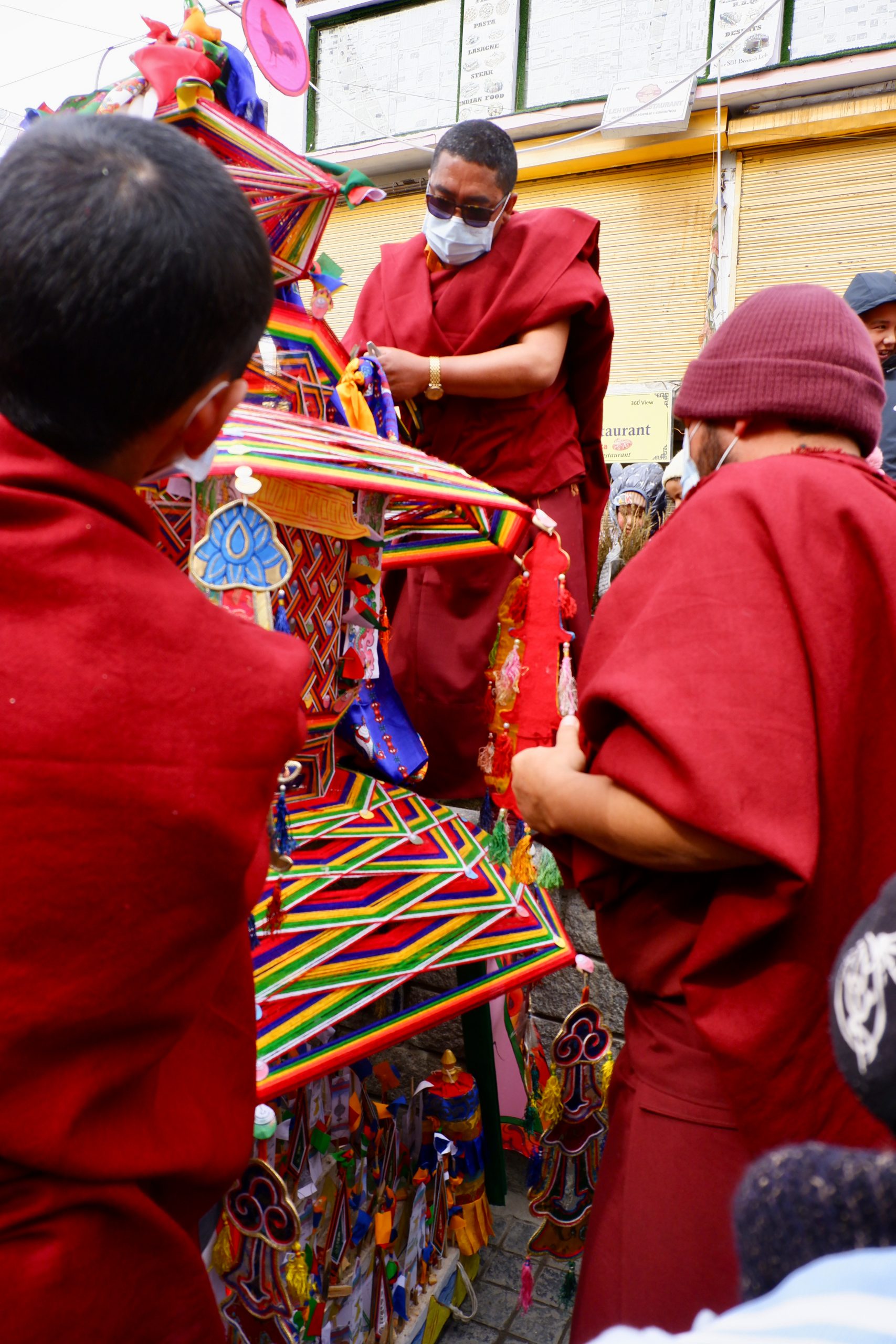 Assembly
Assembly
It is carried in a procession together with other things to the outskirts of the city, in this case to the Old Bus Stand. The other things are mainly tormas, i.e. creations made of tsampa dough, whereby the bad things of the old year are also worked into the dough. Here there were two large tormas and also various smaller structures. People gave money to these figures. Here are pictures of the procession:
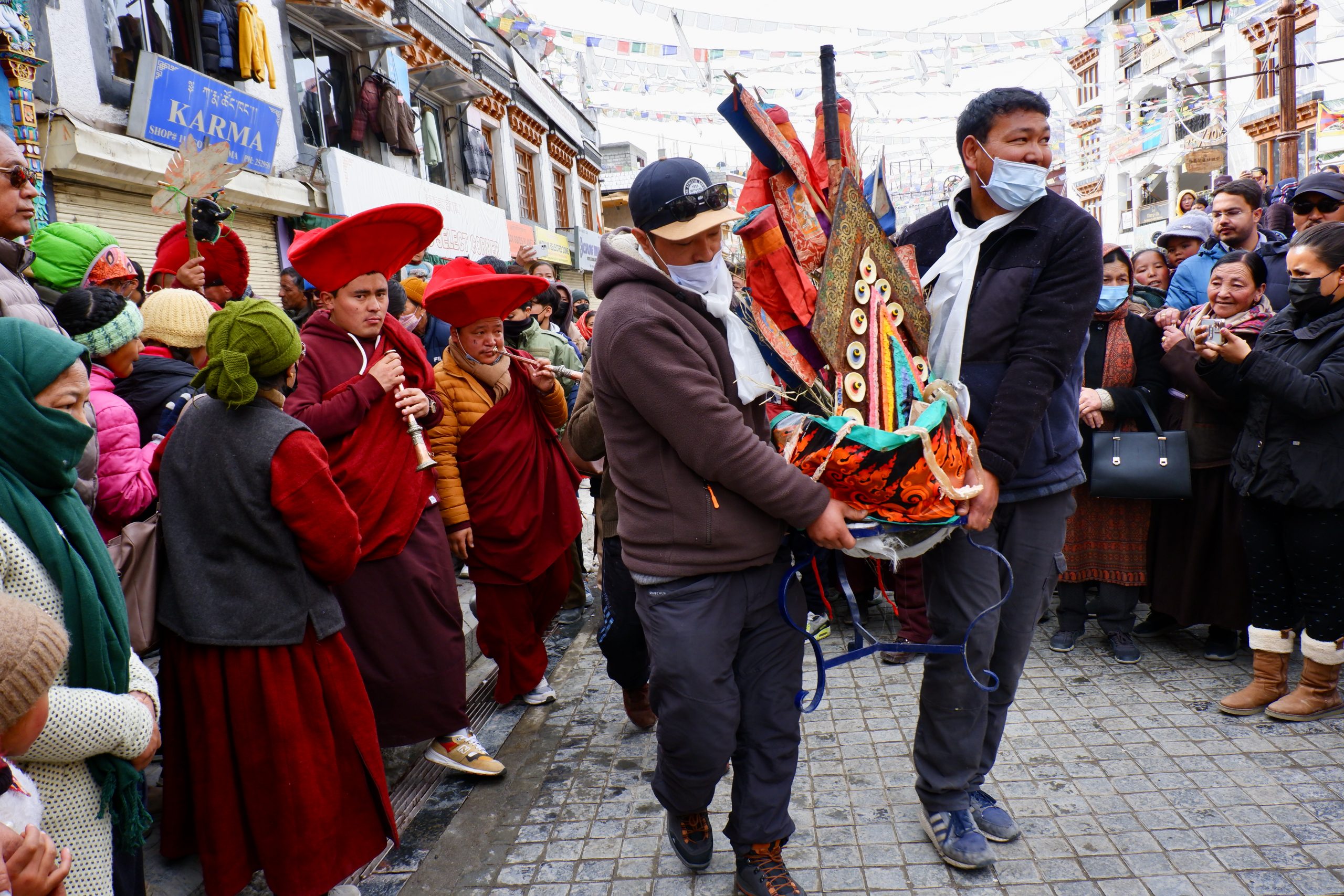 Torma
Torma
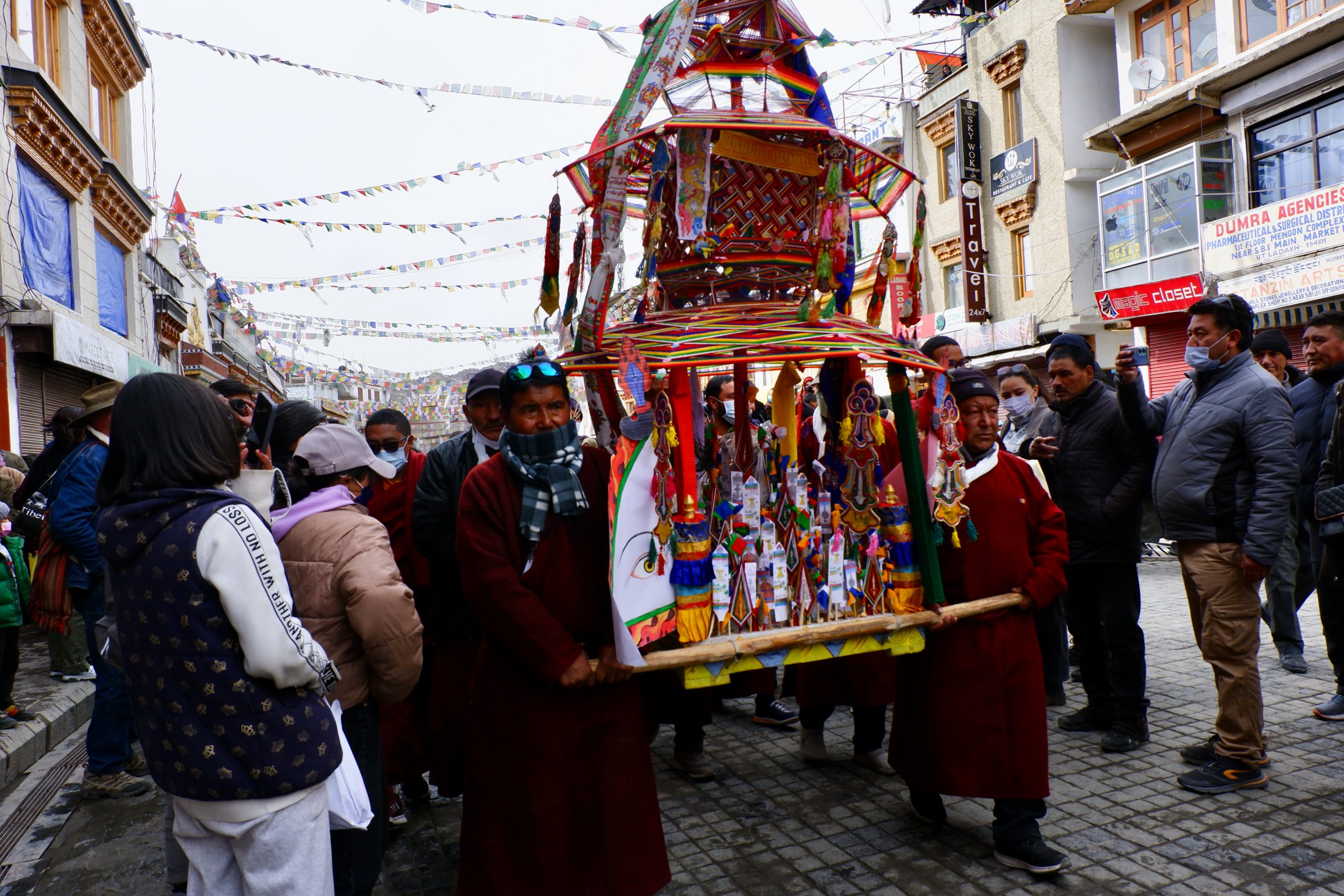 Dosmo 1
Dosmo 1
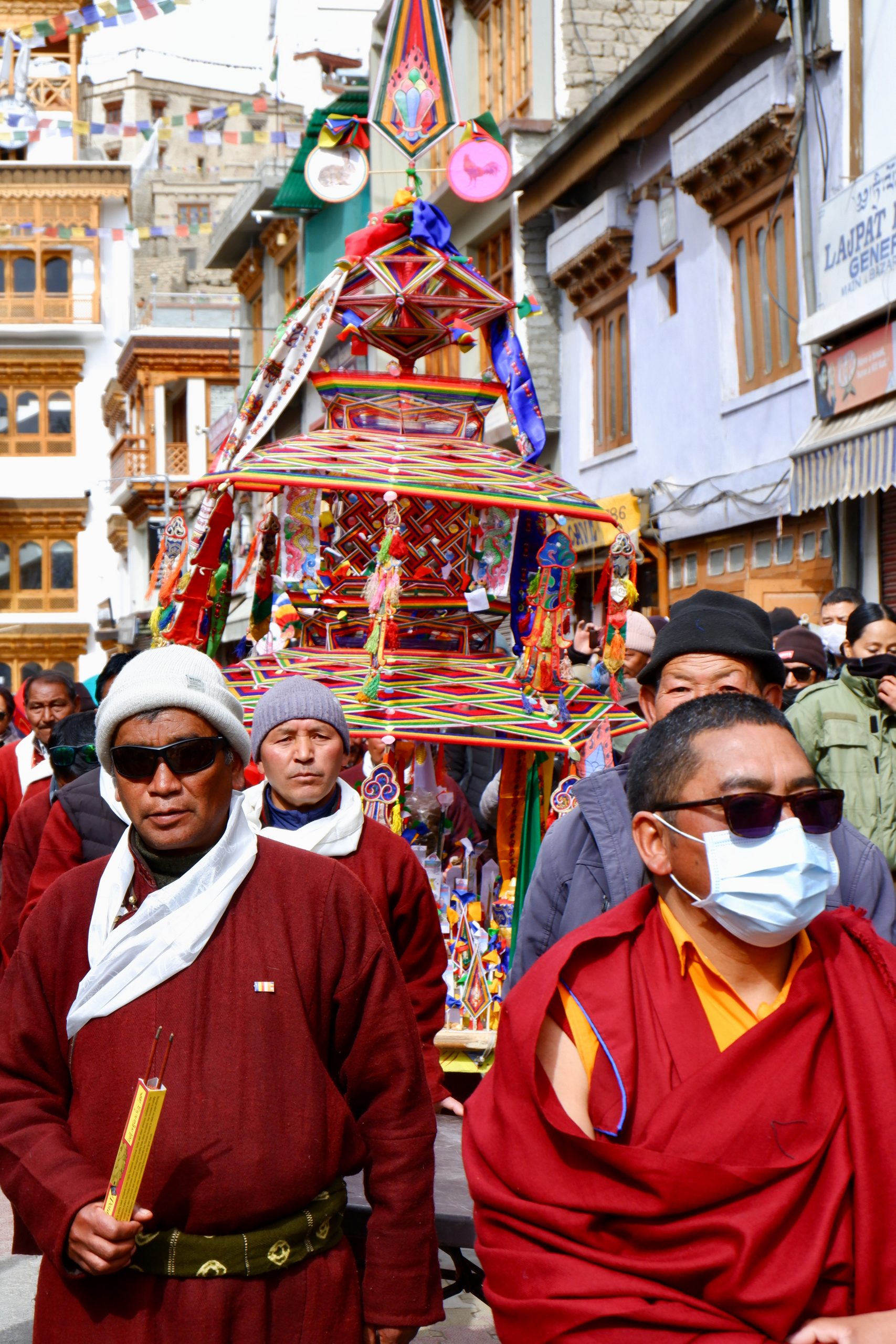 Dosmo 2
Dosmo 2
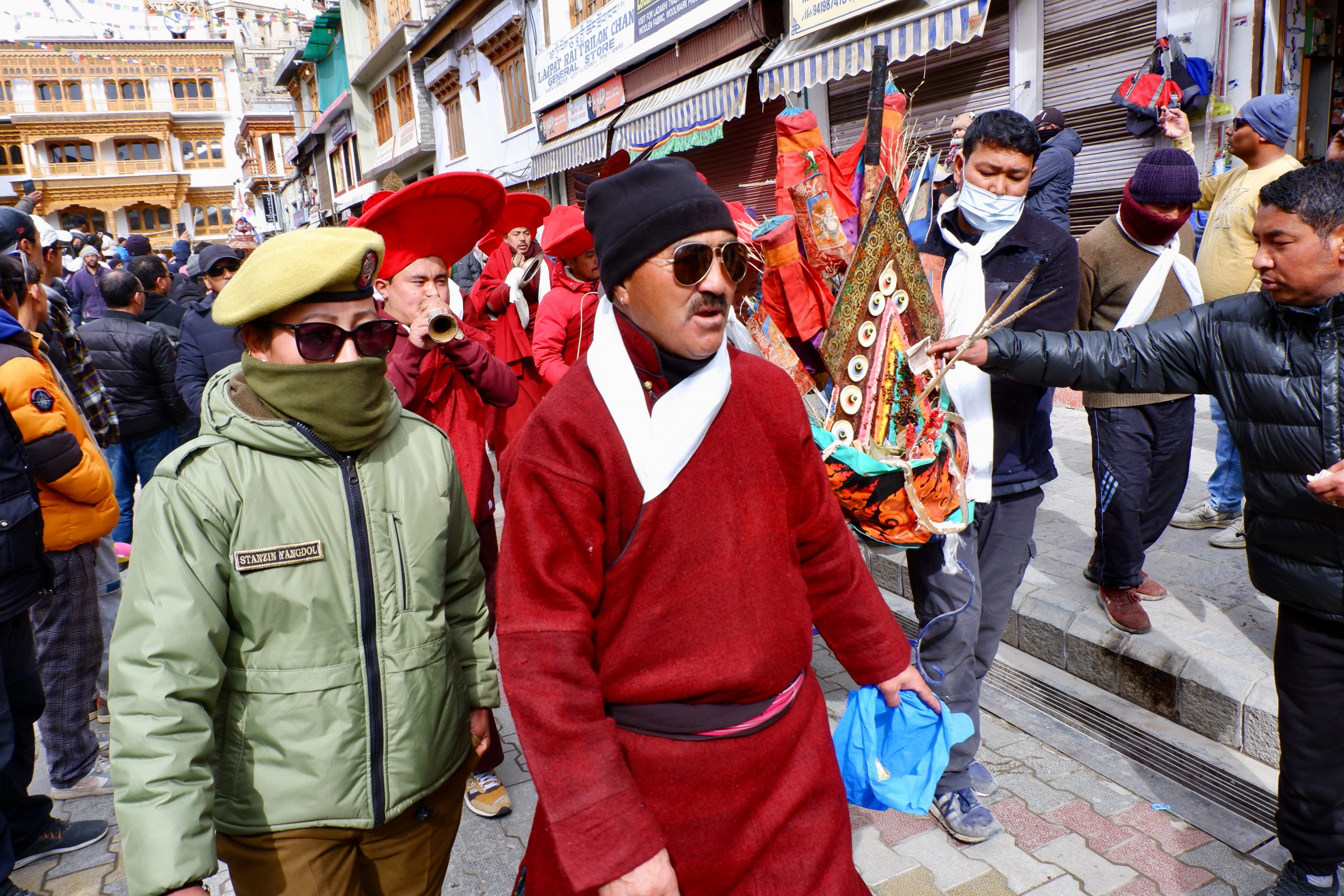 putting money
putting money
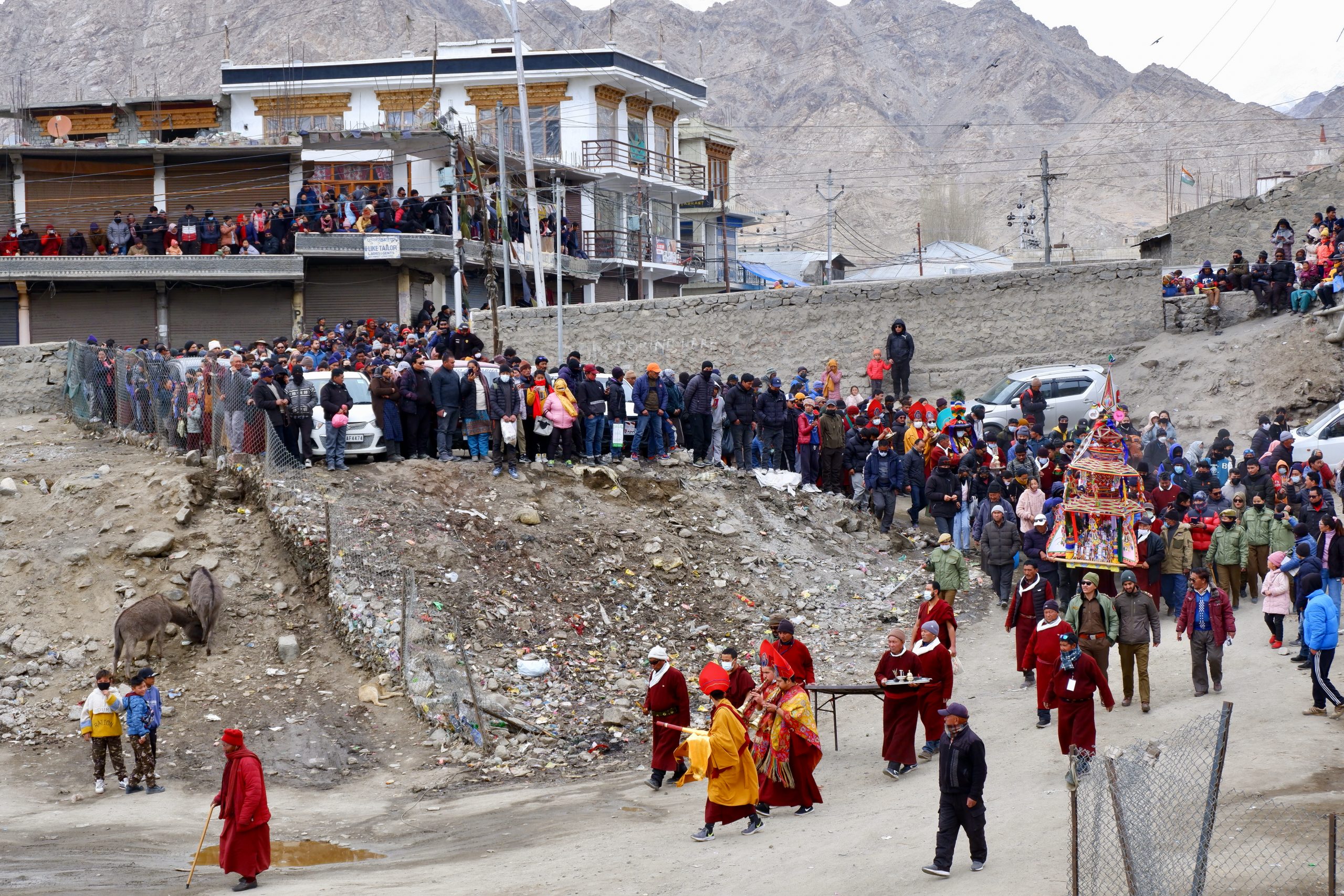 arrival
arrival
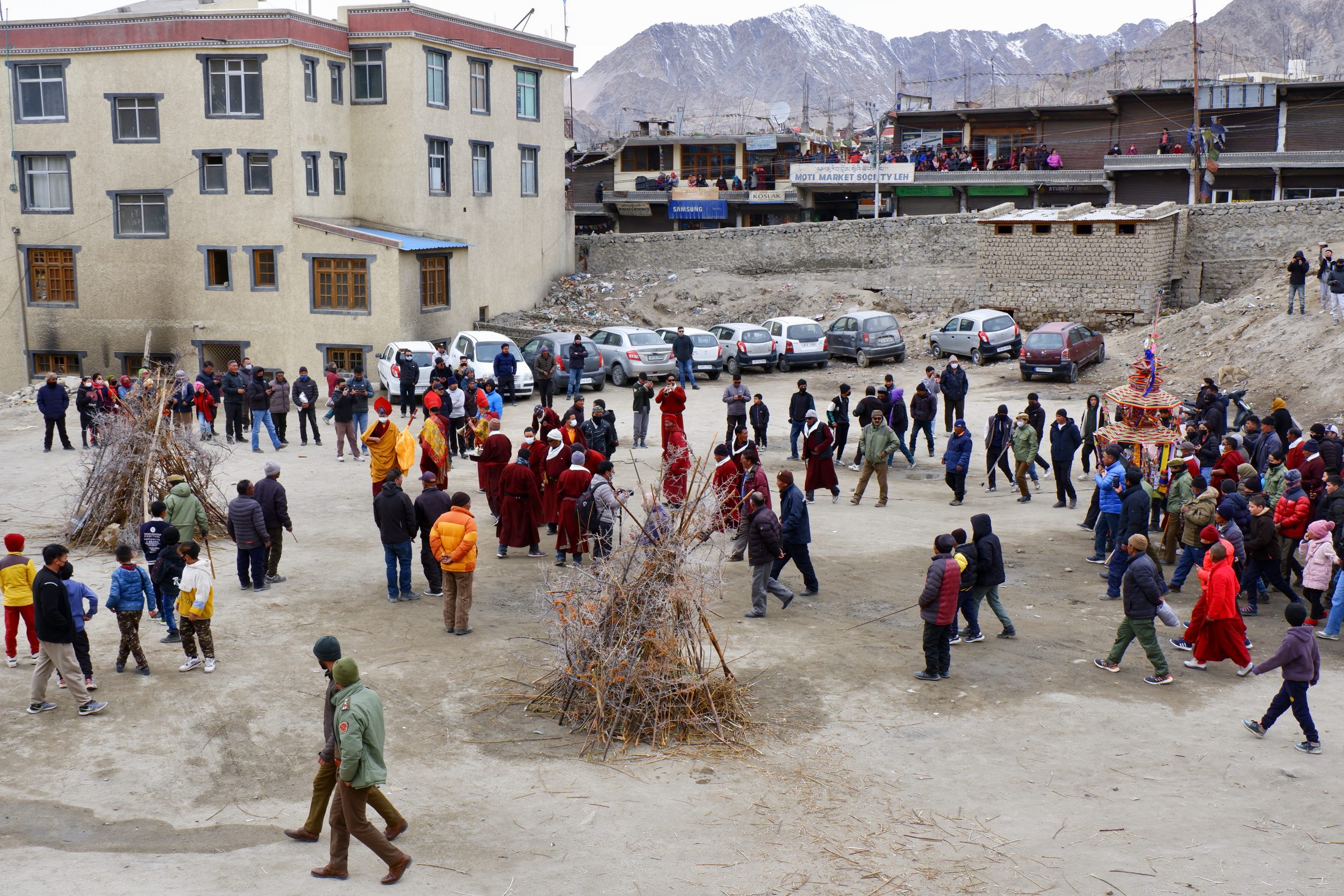 arrival with piles
arrival with piles
There were 3 piles to burn. A torma with monk musicians came to pile 1. First the money was collected out again.
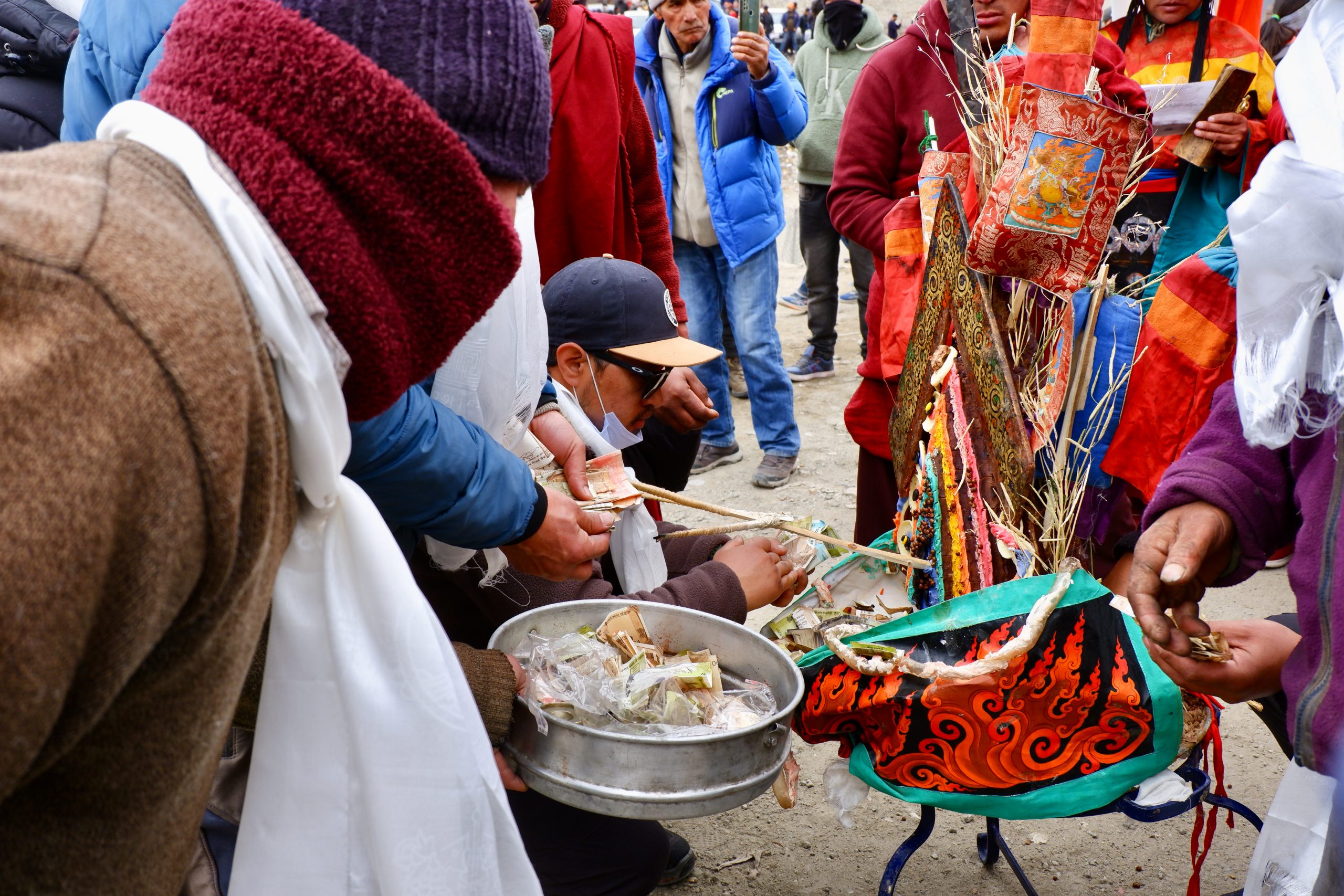 getting money out
getting money out
Then the fire was lit. It burned a bit fiercely and people had difficulties throwing the big torma into it without getting burnt. With a little sweeping it worked.
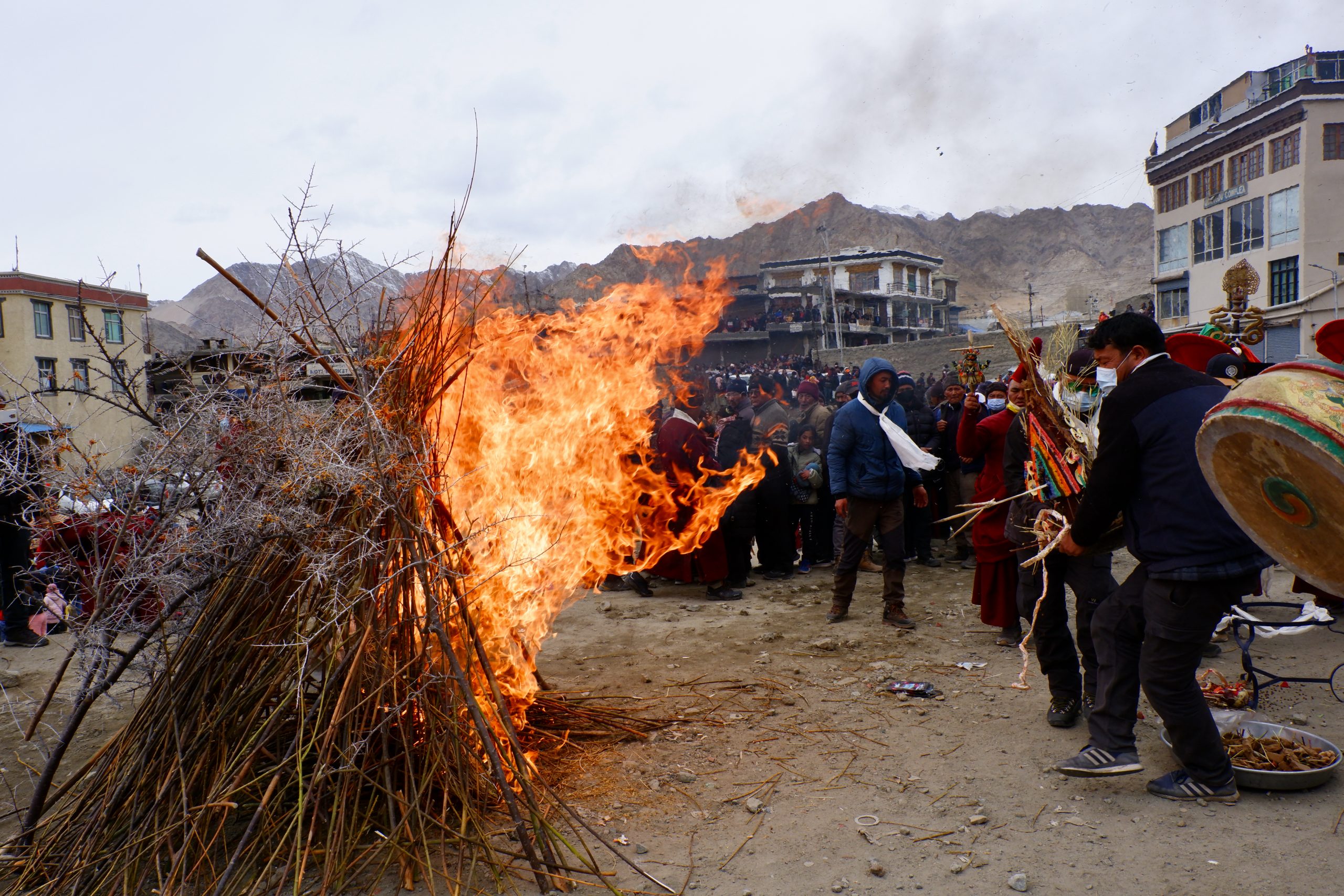 fire, shortly before the throw
fire, shortly before the throw
Next was the Dosmo. However, I didn’t really notice what exactly was happening. All of a sudden it was gone, the fire was burning and men in particular were milling around in a crowd, probably trying to grab threads.
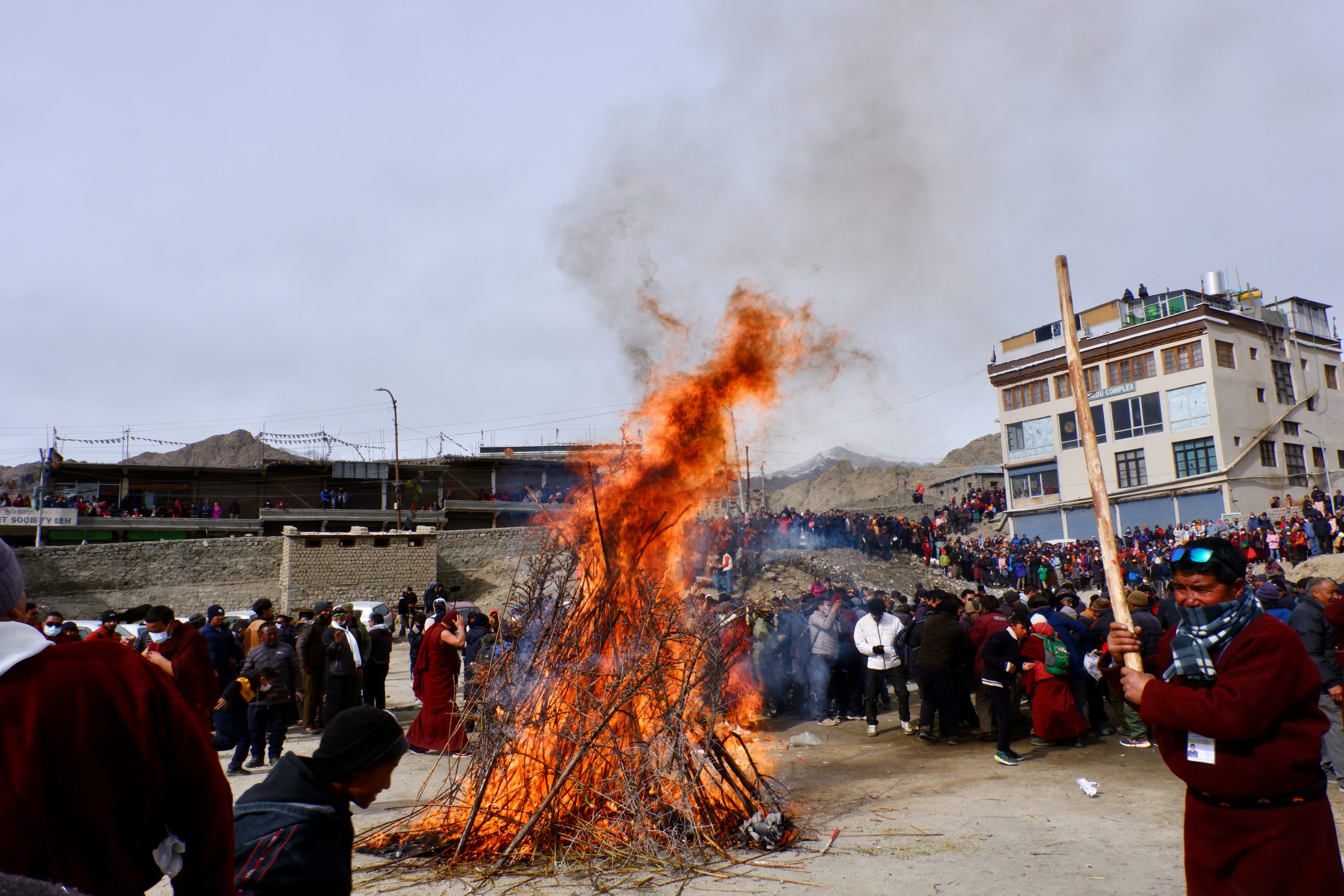 Dosmo-fire
Dosmo-fire
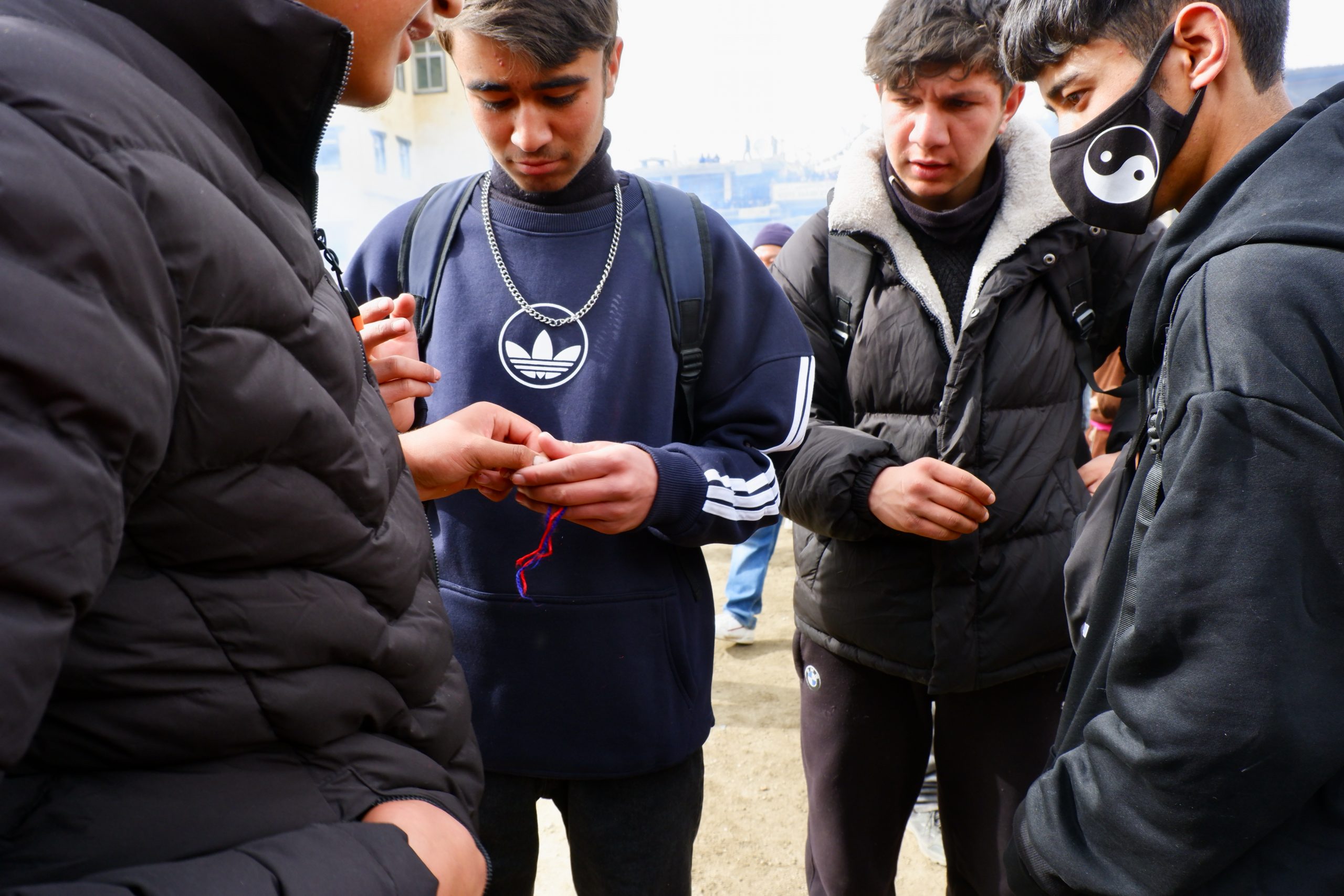 after the crowd
after the crowd
At the third fire there was another large torma. There, too, money was collected and the structure was thrown into the fire. But here there were also other ceremonies with mask dances.
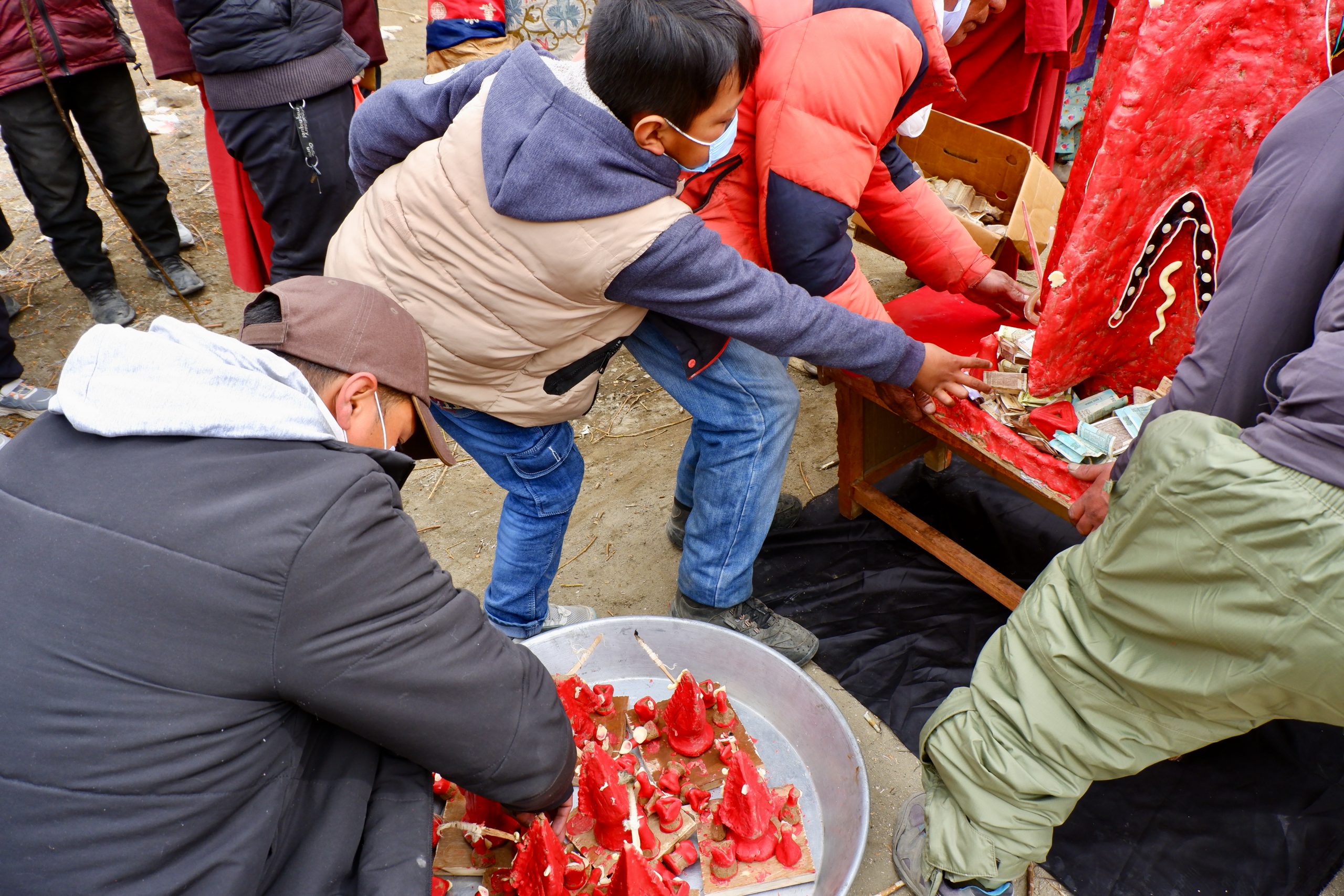 money collecting
money collecting
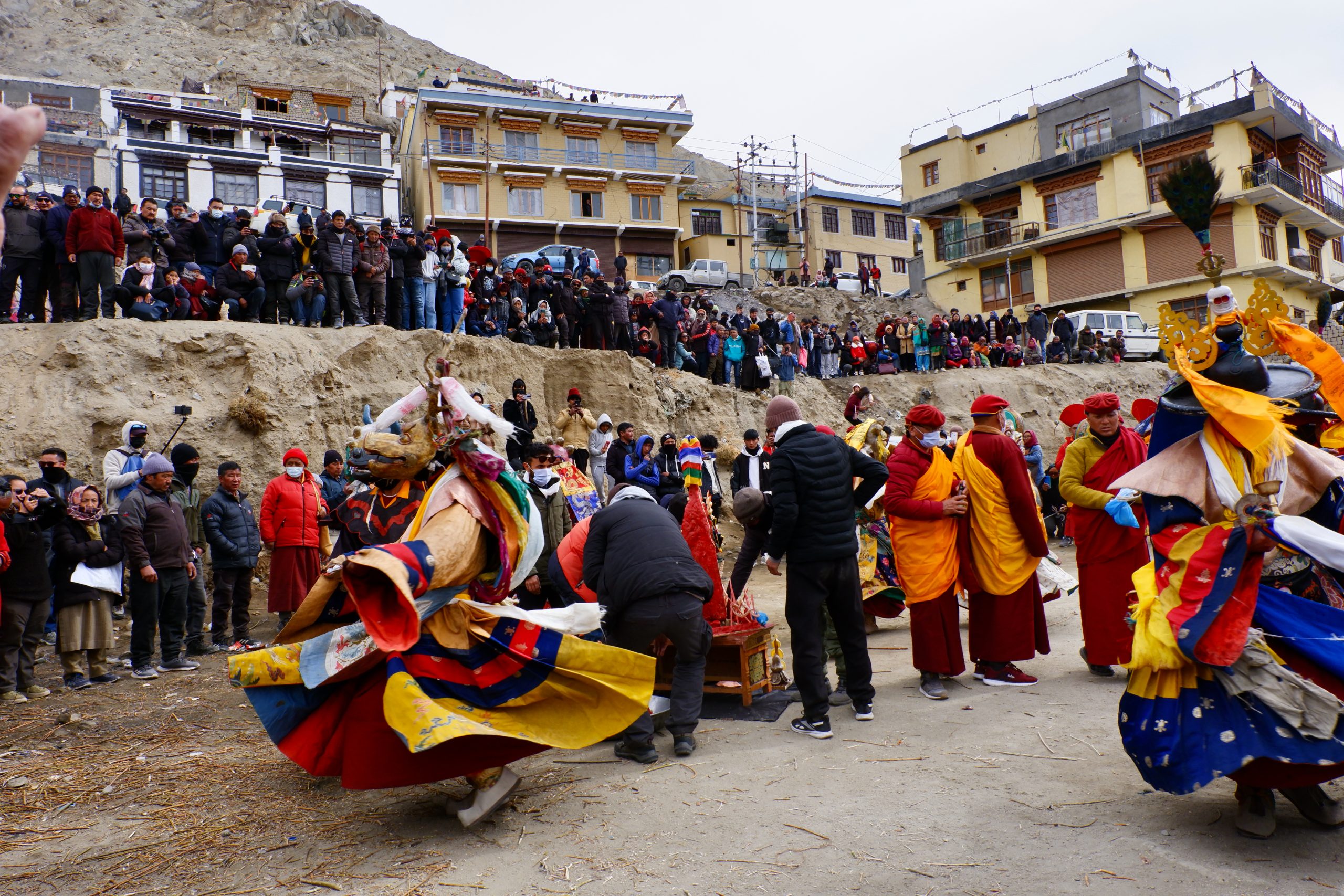 maskdance 1
maskdance 1
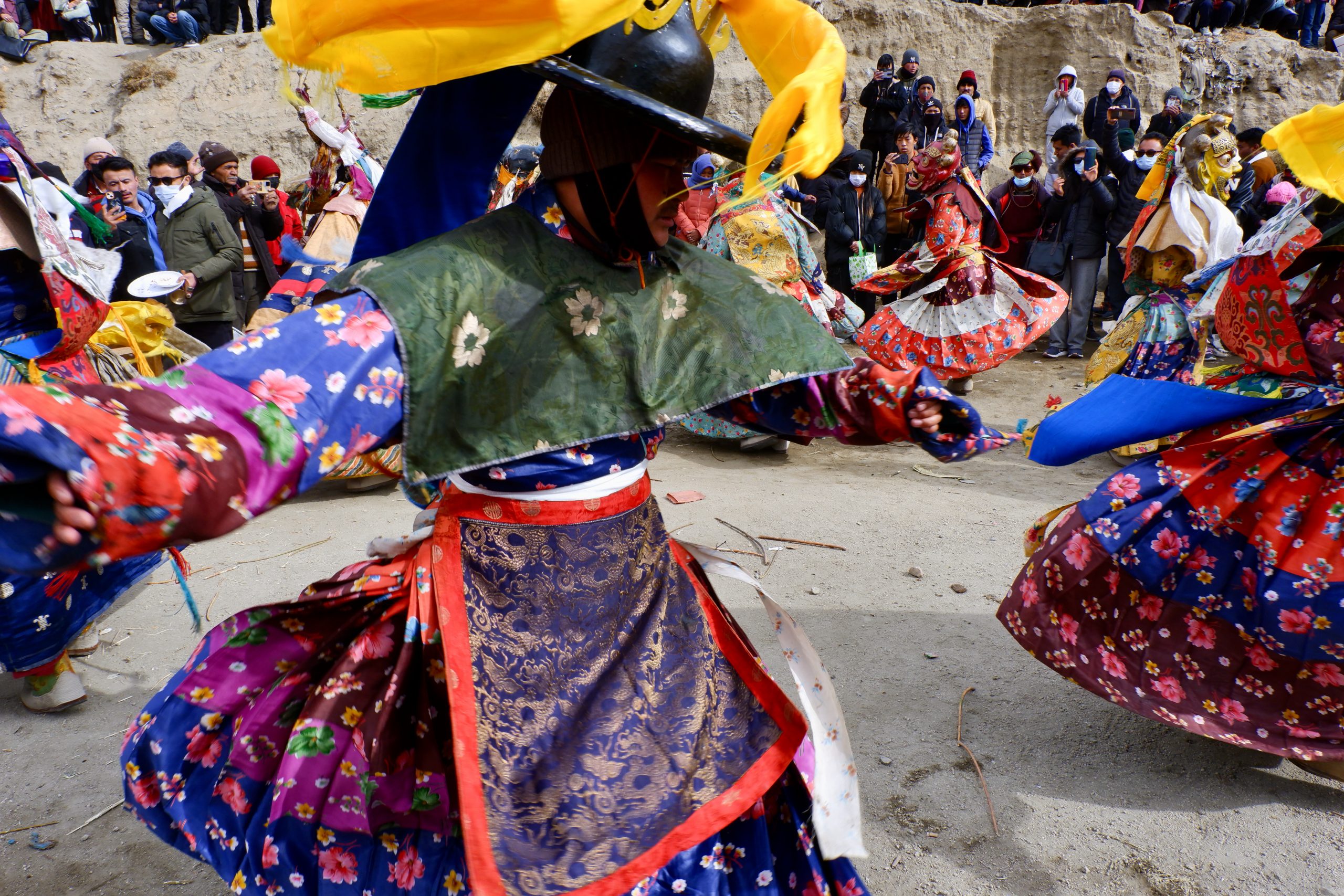 maskdance 2
maskdance 2
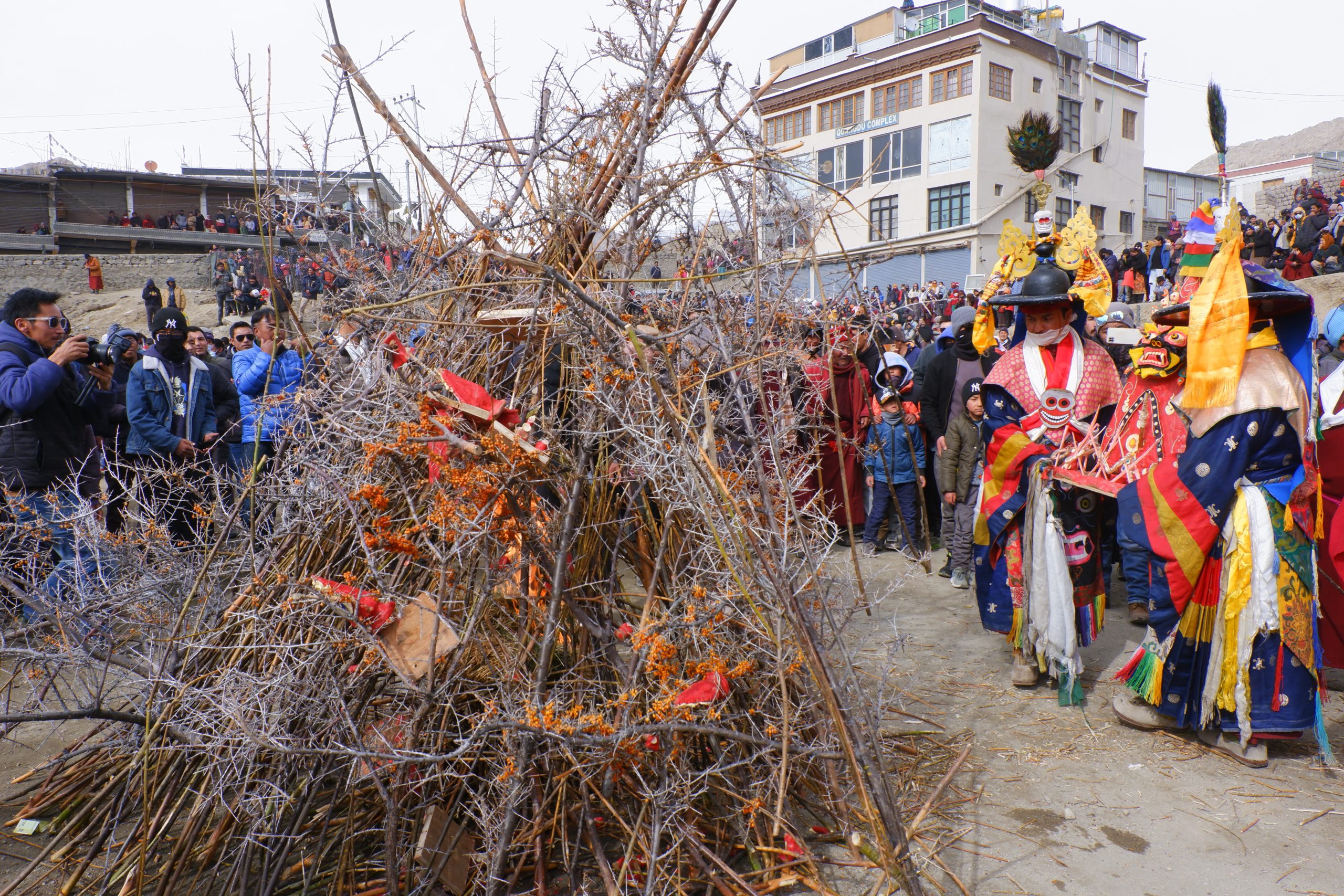 shortly before the throw
shortly before the throw
Dosmoche in Leh is not only all these rituals but also a kind of huge folk festival with games, shopping, eating and meeting. The whole Pologround was packed with stalls, food stalls, games – and next door there must have been some kind of bingo tombola (several of them). I met a colleague that day who told me that her husband had won INR 6,000 the day before and was now eager to play again.
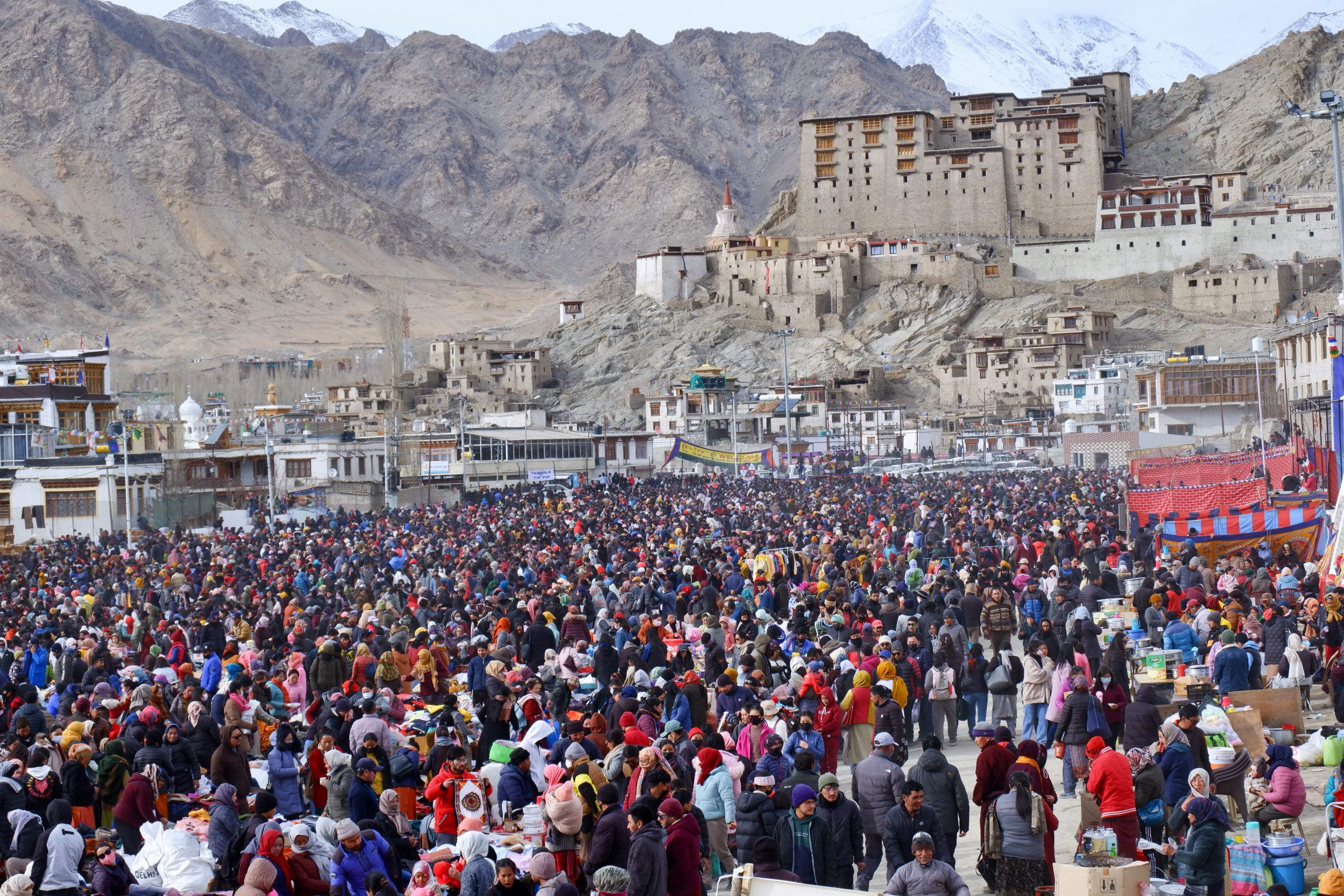 Pologround
Pologround
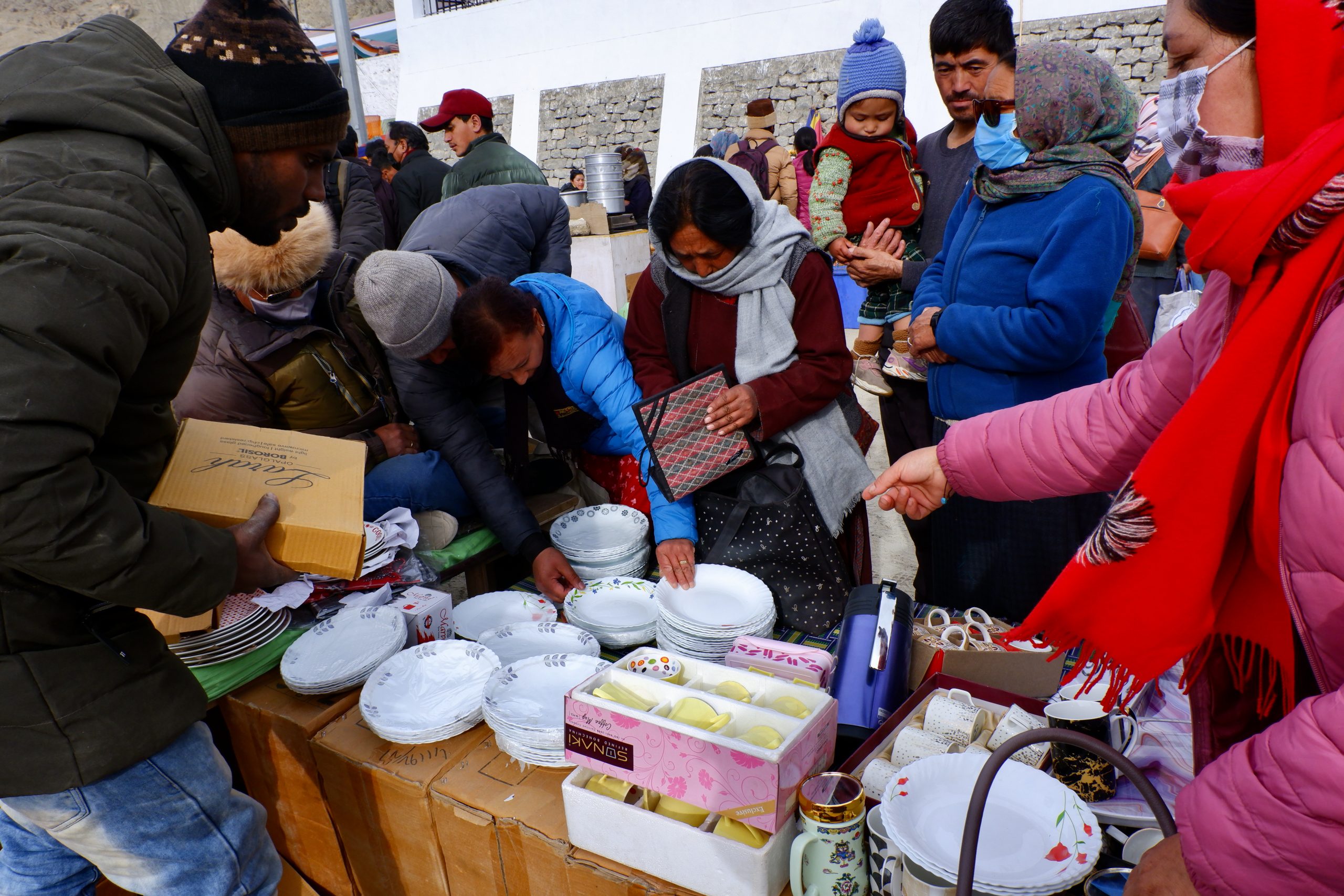 stall
stall
 game-stall
game-stall
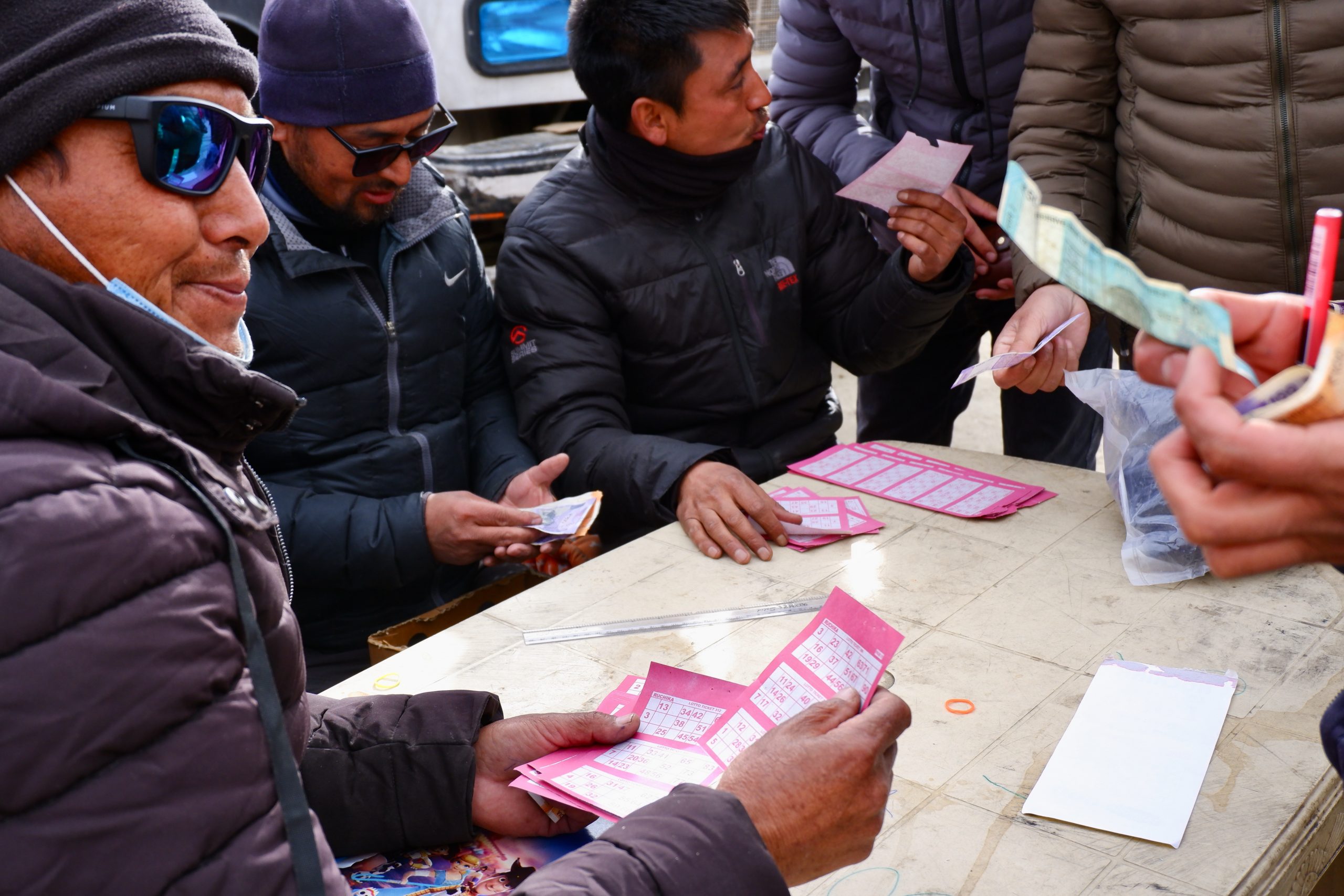 Bingo-Tombola-card-seller
Bingo-Tombola-card-seller
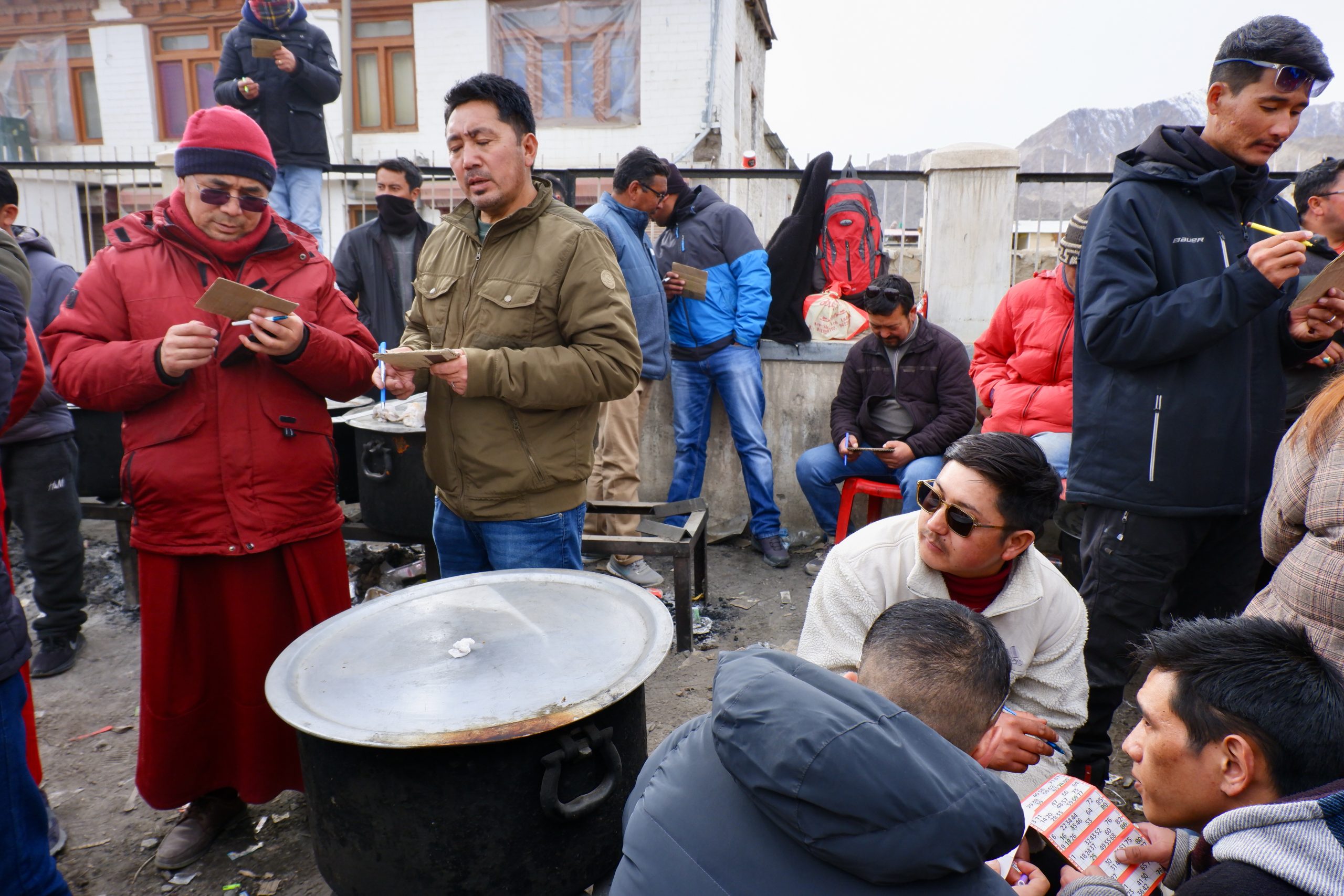 hoping people
hoping people
In any case, there was a lot going on during the days. Afterwards we wanted to go to the Nubra Valley.
